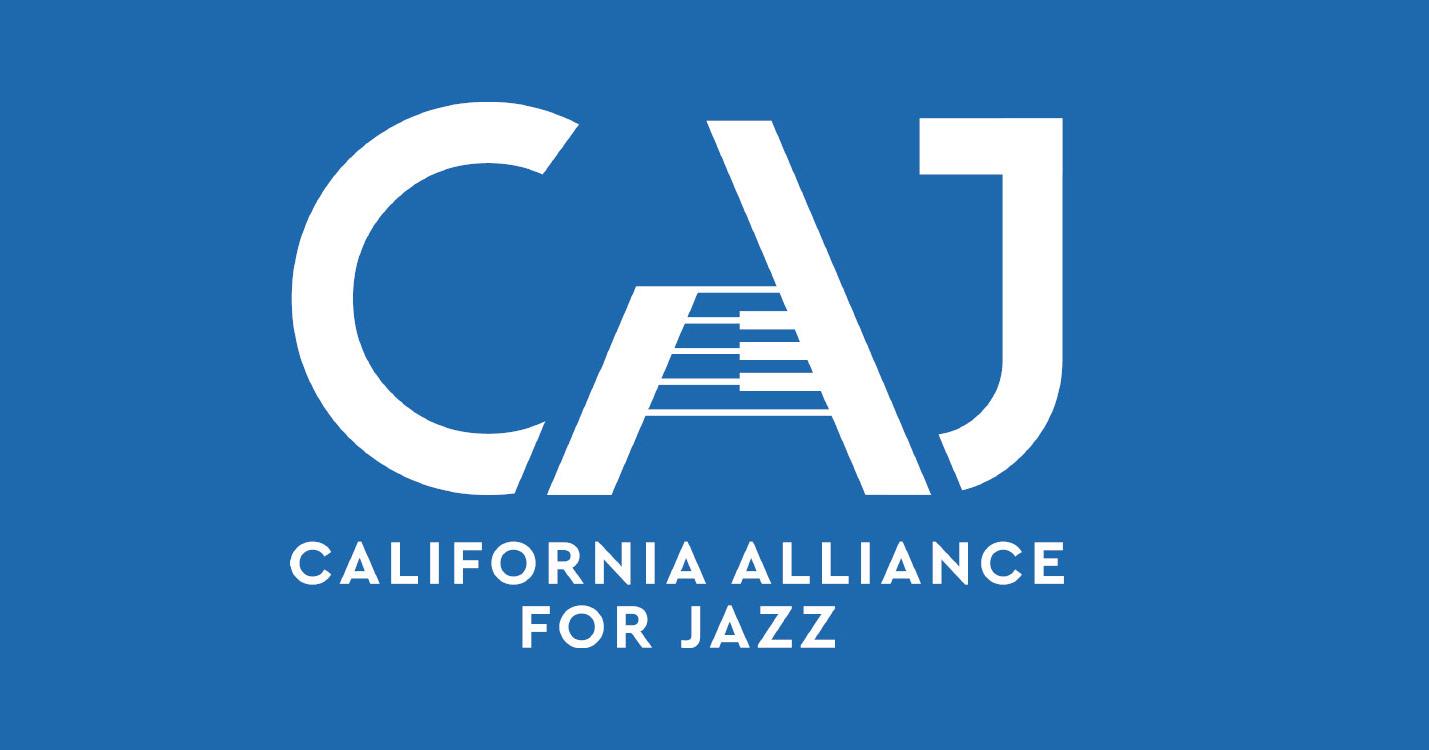














Get kids performance-ready in no time, with Breezin’ Thru Theory and now with Fingerings too! The super-fun Breezin’ Thru Fingerings are timed-response drills for beginning and intermediate players. Kids simply pick their band or orchestra instrument and try to beat the clock matching notes to correct finger positions. As they progress through the levels, students build rapid response and mastery. Level the playing field and accelerate your performance programs by integrating Breezin’ Thru Theory, now with Fingerings too.

18 Southeastern Section Update by Dr. David Betancourt, CMEA Southeastern Section President
19 Southern Border Section Update by Emma Schopler, CMEA Southern Border Section President
20 Southwestern Section Update by Dr. Tamara Thies, CMEA Southwestern Section President
21 4four: More than a Common Teaching Tool by Holly MacDonell, CMEA Music Education Through Technology Representative
23 CMEA State Band and Orcehstra Festival 2024
24 Solfege Singing in the Large Instrumental Ensemble by Tiffany Ou-Ponticelli, CODA President
27 Retired Members Update by Rita Zigas Brown, CMEA Retired Members Representative
28 Support & Mentorship by Ryan Duckworth, CMEA Mentorship Representative
30 Too Many Cultures, Too Little Time? by William J. Coppola, Ph.D., CMEA Global Music Representative Ad
Orchestrate Success in Your Career... JOIN CMEA+. Visit www.nafme.org. CMEA is a federated state association of the National Association for Music Education.

CMEA Magazine is published quarterly (Fall, Winter, Spring, Summer) by CMEA.
Graphic Designer: Adam Wilke

Editors: Holly MacDonell and Trish Adams
Business Manager: Trish Adams
CMEA Administrative Office
Mailing Address: 2417 N 11th Ave, Hanford, CA 93230
Office: 559 904–2002
E-mail: cmea@calmusiced.com Website: www.calmusiced.com
Rates and advertising information available here: calmusiced.com/communication/magazine/ publication-guidelines
The Executive Board of CMEA serves as the Editorial Committee. The observations and opinions expressed in any article in this magazine are those of the author and do not necessarily represent the official position of the Association. CMEA does not necessarily endorse any product or service advertised in this magazine.
32 New Teacher Feature Podcast hosted by Nico Salum, CMEA New Teacher Representative
33 IKS Symposium 2023
33 Music Supervisors Update by Brad Van Patten, CMEA Music Supervisors Representative
34 CMEA Choral Festival Returns by Stacey Kikkawa, CMEA Choral Festival Coordinator
35 CMEA State Choral Festival 2024
2020-2022 Armalyn De la O, San Bernadino
2018-2020 John Burn, Cupertino
2016-2018 Scott Hedgecock, Fullerton
2014-2016 Michael D. Stone, Bakersfield
2012-2014 Russ Sperling, San Diego
2010-2012 Norman Dea, Walnut Creek
2008-2010 Jeff Jenkins, Chula Vista
2006-2008 Cheryl Yee Glass, Danville
2004-2006 Rob Klevan, Pacific Grove
2002-2004 Sam Gronseth, Paradise
2000-2002 George DeGraffenreid, Fresno
1998-2000 Dennis L. Johnson, Salinas
1996-1998 Jay D. Zorn, La Crescenta
1994-1996 Don Doyle, Pasadena
1992-1994 Bill Adam, Roseville
1990-1992 Carolynn Lindeman, Greenbrae
1988-1990 L. Leroy Roach, Walnut Creek
1986-1988 John L. Larrieu, Portola
1984-1986 Vivian M. Hofstetter, Bakersfield
1982-1984 David S. Goedecke, Stockton
1980-1982 Charles L. Freebern, San Diego
1978-1980 Henry Avila, Monterey
1976-1978 Mary C. Reed, Elk Grove
1974-1976 Marlow Earle, Lakewood
1972-1974 Louis Nash, La Crescenta
1970-1972 Anthony L. Campagna, Foster City
1968-1970 Judd Chew, Sacramento
1966-1968 Kenneth D. Owens
1964-1966 Keith D. Snyder, Davis
1962-1964 Gibson Walters, San Jose
1960-1962 Douglas Kidd
1957-1960 Joseph W. Landon, Fullerton
1955-1957 Harold Youngberg, Oakland
1953-1955 Fred Ohlendorf, Long Beach
1951-1953 George F. Barr
1949-1951 Elwyn Schwartz
1947-1949 Clarence Heagy, Fresno
36 What Does Our Musical Community Say About Devleloping Musical Creativity?

by Dr. Lisa A Crawford, CMEA Creating and Composition Representative
37 CCDA Update by Dr. Christopher Peterson, CCDA President
38 CBDA Update by David Green, CBDA Director of Communications
39 CAJ Update by Barb Catlin, CAJ President
2022 - Marlene Mudge
2020 - Stephen Luchs
2019 - Judi Scharnberg, Jeri Webb
2018 - Dr. Lawrence Stoffel, Dean Hickman
2017 - Dr. Edward Harris, Michael Corrigan, James Mazzaferro
2016 - Dr. Robert Halseth, Rosemarie Krovoza, Rick Meyer
2015 - Dale Anderson, Ann Marie Haney, Dr. Thomas Lee
2014 - Jon Christian
2013 - Orrin Cross
2012 - Gayane Korkmazian, 2012; Gerald E. Anderson, 2012;
2011 - David Whitwell
2010 - Nicholas Angiulo, Vincent Gomez
2009 - Kem F. Martinez, Carl W. Schafer, Robert W. Lutt
2008 - Duane Weston
2007 - John Larrieu, Mary Val Marsh, Barbara Cory, Bill Ingram
2006 - Carolynn Lindeman, Joe Foster, Paul Shaghoian
2005 - Frances Benedict, L. Leroy Roach, Silvester McElroy, Jerry Kirkpatrick
2004 - Robert Greenwood, Arthur Huff, Lyle Stubson, Lois Vidt
2003 - John Farr, Thomas Eagan
2002 - Larry Johnson, Mary Louise Reilly
2001 - William Hill, Helynn Manning, Wesley “Colonel” Moore
2000 - Vivian Hoffstetter, F. John Pylman
1999 - Lawrence Sutherland
1998 - Chuck Schroeder
1997 - Dean Semple
1996 - Burl Walter Jr.
1994 - Jerry Moore
1992 - Mike Pappone
1991 - David Goedecke
1987 - Marlowe Earle
1985 - Arthur Dougherty
1983 - William Burke
1981 - Aubrey Penman
1979 - Steve Connolly
1977 - Howard Swan
1975 - Russell Howland
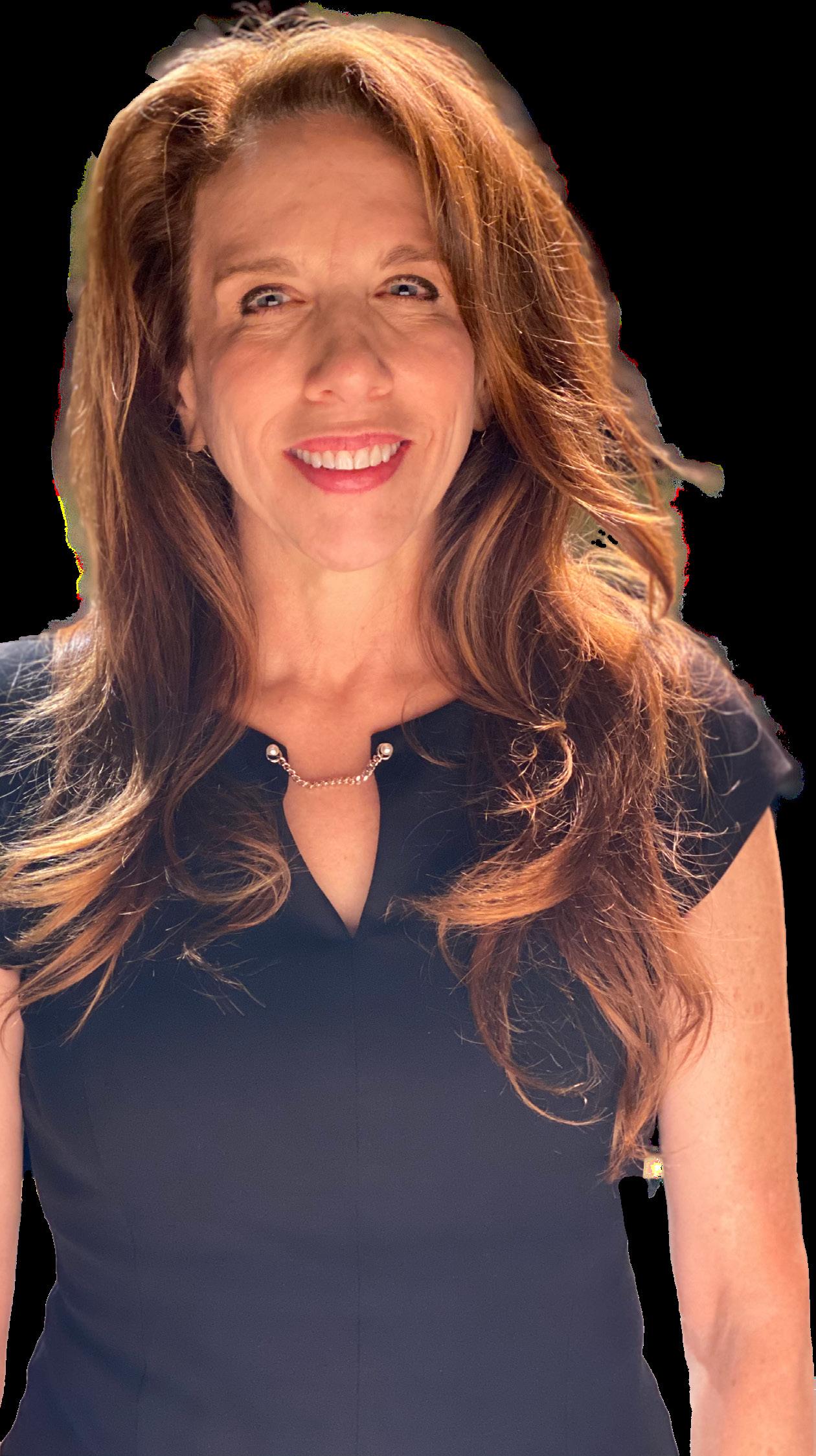

It’s the end of June and that means one thing in the NAfME world – it’s time for our National Assembly in Reston, Virginia! For the state presidents, the event began on Wednesday, June 21 and concluded on Monday, June 26th, and every day was packed with meetings, learning, and times to connect, as well as brainstorm with state and national leaders, and take part in our Hill Day. It’s quite amazing to be in a space where hundreds of people are coming together as volunteers and in service to one goal – to simply provide a quality music education to all students. The energy was palpable!
The highlight of our time together was our national Hill Day, with all in attendance of our National Assembly, visiting our U.S. Representatives and Senators’ offices to thank them for their support for music education and to continue to advocate for full education funding with Title I, part A, Title II, part A, and title IV, part A – because, yes, we CAN use these funding sources for music education! Click here to read more.
This was our first in-person Hill Day since 2019 and it was wonderful to be with people face-to-face and see their excitement about music. So many of the Legislative Aides/Staffers were in some type of performing arts class in high school or college and they personally knew the importance of arts education. Honestly, it’s kind of an easy ‘sell’ when we talk about music making, joy, community, and contributing to our creative economy. This year I was joined by Scott Hedgecock (Western Division President) and Mike Stone (Western Division President-Elect) and we were quick to share stories about the power of music and the need in California. It’s so important to continue to build relationships with our elected officials to keep music (and arts) education on the forefront, and in fact, if any of you want to reach out to your elected officials, follow the hyperlinks below:

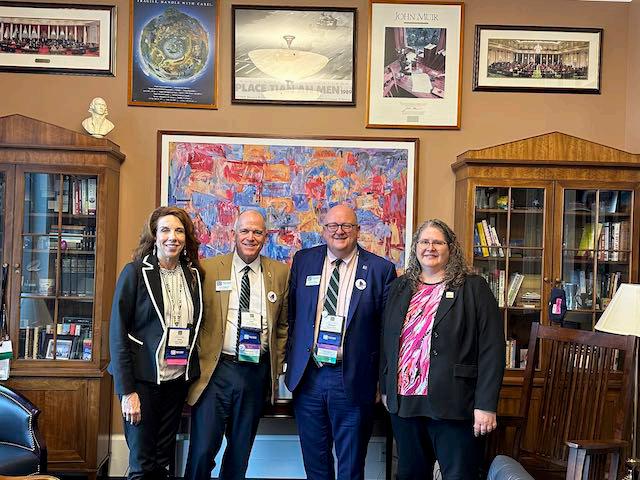
- State Senate and Assembly Representatives
- U.S. Congress (U.S. Senate and House of Representatives)
The contact information for all members are hyperlinked with both their local and D.C. addresses. Feel free to reach out and share all that you are doing or share a need, because I do know that they are always grateful to hear what is really happening in your schools. If you aren’t sure what to ask for or say, you can also use any of NAfME’s resources.
After Hill Day, we had 3 days of workshops and breakout sessions. On Friday I was on an interactive panel for our Collegiate Advocacy Summit attendees where we shared stories about ‘Thriving as a Music Educator’. I shared the session with Annamarie Bolino (VA), Johnny Hamel (NC) Judy Bush (NE), and David Kaufman (MD), and what fun it was to connect with the students, hear their connections and support them in their questions. I am always so energized and encouraged when I see aspiring music educators who are ready to take on the world and share music with our young people. The future is in great hands! (I also suggested that each collegiate move to California to teach, given that we have jobs for them; everywhere I go I’m recruiting for our state!)
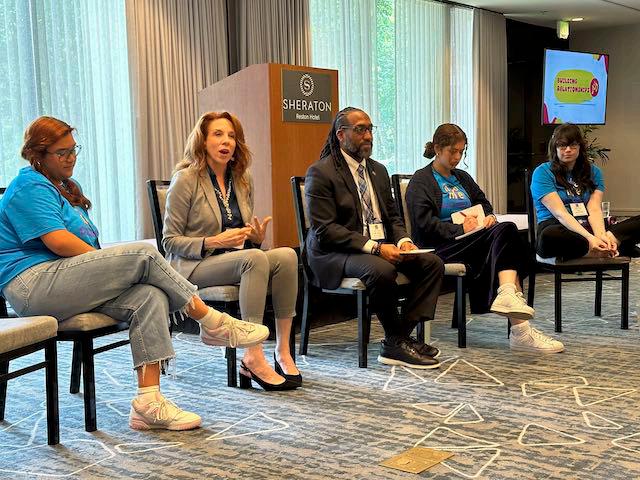
In addition to the Collegiate Advocacy Summit, I presented about Prop 28 to the entire National Assembly and shared the outcomes and needs of this new law. While I focused on the fortunate financial outcome, I was also honest about the struggle with the rollout, the need for educators, and the concern I have for small schools in our state. The disparity of funding based on population doesn’t provide equity in funding to create opportunities in arts education, and while I am grateful for every dollar, I also know that the smaller schools in our state need additional support.
Speaking of small schools, NAfME has launched a professional learning community on this very topic, and I was encouraged by their initial steps! Please note that even the term ‘small schools’ has varied definitions, depending on the individual or group, and we spoke about schools with 6 students to those with several hundred, for the average person, it’s actually a relative term depending on the school and its location. California has hundreds of ‘small schools’ and I think this is an opportunity to connect the sites and
educators to NAfME’s initiative. I hope our members can be a part of this! Click here if you would like to contribute your experiences teaching in a small school. While this is still in its initial phase, I have a feeling that their next steps will help many of our California members feel seen and heard. This session also made me realize that I need to intentionally do more as the president of CMEA to support all of our schools and teachers, and I hope to fix this starting in the fall. Stay tuned with more information to come!
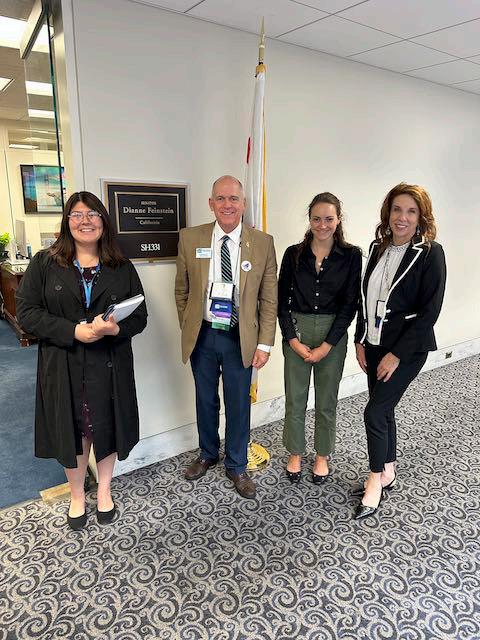
capabilities of AI and its future in music education. I’m a fan of AI and I’m actually looking forward to what can be possible in music education to support our teaching to reach every individual learner. I mean, who wouldn’t want to improvise with Maynard Ferguson, play a duet with Yo-Yo Ma, jam with Neil Peart, or have an AI program quickly generate a new music part for a student with learner-centered specifications? While I’m all in on those ideas, I am a little nervous about its possible negative uses. So, the question is, how do we align with AI to create a shared vision of education? If you want to know more of what the US Department of Education thoughts are, check out this May 2023 report: AI and the Future of Teaching and Learning
Closing out the National Assembly, NAfME’s Music Teacher Profession Initiative (MPTI) presented “A Blueprint for Strengthening the Music Teacher Profession ” “This document is a report of the Music Teacher Profession Initiative’s work concerning music teacher educators’ perceptions of barriers to and through the profession, as well as mitigations to those barriers” (page 5). I encourage you to read this, and when comments or participation are requested to lend your experience and voice, please do so! Given that the goal is to prepare the next generation of music educators, I look forward to the possibility of surveying students and identifying their needs in music education. This would support a backwards design to meet student requests while also addressing how this can drive a realignment of teacher preparation programs. This data would be invaluable and help us refocus our trajectory.
From the numerous sessions that were available to us, one additional session was quite impactful, and that was Navigating Divisive Concepts Laws. While this report was already shared with us in the spring, I so appreciated Karen Salvador’s (MI) presentation as the author. Teachers in many states are struggling to teach where censorship in education exists and many feel afraid to teach music that is historically representative of our country. The reality is that as of 2023, 37 states have laws that directly impact and censor education, and more are in the works. While I would like to say that this would never happen in California, it is present. This past year we were informed of several divisive concept laws that did not pass. My largest concern is that if these are passed, we would narrow the curricula and leave out historically and culturally valuable music that is definitive of people and the whole of our country’s culture. We are who we are because of all of us who have contributed to our collective culture. I will always stand firm in providing the most and best for all children in music education that reflects all children. A session that created the hot topic of the week was The Implication of AI – Friend or Foe? Rick Dammers (Rowan University, NJ) and Mary Luehrsen (NAMM) presented the
I hope you have time to click on a few of the links above and check out the information. May your summer find you resting with downtime to rejuvenate and enjoy your friends and families!
CMEA EXECUTIVE BOARD
CMEA President
Anne Fennell afennell@calmusiced.com
CMEA President-Elect
Chad Zullinger czullinger@calmusiced.com
CMEA Vice President Holly MacDonell hmacdonell@calmusiced.com
CMEA Secretary Tiffany Barry tbarry@calmusiced.com
CMEA Immediate Past President Armalyn De La O adelao@calmusiced.com
CMEA OFFICE cmea@calmusiced.com 2417 North 11th Avenue Hanford, CA 93230 559 587-2632
CMEA Executive Administrator Trish Adams cmea@calmusiced.com 559 904-2002
CMEA Administrative Assistant Heather Adams hadams@calmusiced.com 559 410-2425
CMEA Legislative Advocate Martha Zaragoza Diaz lobbyist1.mzd@gmail.com
SECTION PRESIDENTS
CMEA Bay Section President Sandy Lewis slewis@pausd.org
CMEA Capitol Section President Christopher J. Tootle ctootle80@gmail.com
CMEA Central Section President Michael Tackett michaelt@cos.edu
CMEA Central Coast Section President Sam Oh samuel.oh@salinasuhsd.org
CMEA North Coast Section President Collin Kirkwood collinkirkwood1@gmail.com
CMEA Northern Section President Tanner Johns tjohns@chicousd.net
CMEA Southeastern Section President Dr. David Betancourt dbetancourt@cerritos.edu
CMEA Southern Border Section President Emma Schopler emmaschopler@gmail.com
CMEA Southwestern Section President Dr. Tamara Thies Tamara.Thies@csulb.edu
NAfME OFFICERS
NAfME President
Scott Sheehan 1806 Robert Fulton Drive Reston, VA 22091 800 336-3768
NAfME Western Division President Scott Hedgecock shedgecock@calmusiced.com
COUNCIL OF REPRESENTATIVES
CMEA CAJ Representative Barb Catlin barbcatlin@gmail.com
CMEA CASMEC Coordinator Francisco Marquez fmarquez123@me.com
CMEA CBDA Representative Jeff Detlefsen DetlefsenJ@gmail.com
CMEA CCDA Representative Dr. Christopher Peterson cpeterson@fullerton.edu
CMEA CCDA Choral Leadership Academy Coordinator John Sorber johnso@cos.edu
CMEA CODA Representative Tiffany Ou-Ponticelli touponticelli@pausd.org
CMEA Advocacy Day Performance Coordinator John Brasier jbrashie@egusd.net
CMEA Advocacy Representative Russ Sperling sperlingruss@gmail.com
CMEA Collegiate Representative Dr. Diana Hollinger dhollinger2006@yahoo.com
CMEA Collegiate Council Representative Daniel Crispino dcrispino@mail.csuchico.edu
CMEA Creating and Composition Representative Dr. Lisa Crawford lisacrawfordmusic@gmail.com
CMEA CTA Liason Alan Underwood
CMEA DEIA Representatives Jonathan Raman Jraman85@gmail.com
CMEA Diverse Learners Representative Regan Lambert rlambert@emcsd.org
CMEA Elementary Music TK-5/6 Representative Sal Rios rioss@gfusd.net
CMEA Global Music Education Representative Dr. Will Coppola wcoppola@usc.edu
CMEA Higher Ed Music Education Supervisor Representative Dr. Kara Ireland D’Ambrosia Kara.IrelandDAmbrosio@sjsu.edu
CMEA Higher Education and Research Representative Dr. Ruth Brittin rbrittin@pacific.edu
CMEA Innovations Representative Dr. Megan Foley mfoley@polytechnic.org
CMEA Mentorship Program Chairperson Ryan Duckworth DuckworthMusic@gmail.com
CMEA Music Supervisors Representative Brad Van Patten BradVanPatten@iusd.org
CMEA Music Education through Technology Representative Holly MacDonell hmacdonell@calmusiced.com
CMEA New Teacher Representative (5 or less years) Nico Salum nicolosalum@gmail.com
CMEA Retired Members Representative Rita Zigas-Brown rzigas.brown@gmail.com
CMEA Rural Schools Representative Jeremiah Jacks jeromejacks30@gmail.com
CMEA Secondary Music 6-12 Representative Amy Lui amy.lui@polyhigh.org
CMEA Social Media Representative Holly MacDonell hollymacdonell@gmail.com
CMEA State Band and Orchestra Festival Coordinator John Burn jburn@calmusiced.com
CMEA State Choral Festival Coordinator Stacey Kikkawa choralfestival@calmusiced.com
CMEA State Solo and Ensemble Festival Coordinator Cheryl Yee Glass cglass@srvhs.org
CMEA Tri-M Representative To Be Announced
CMEA Urban Schools Representative Zack Pitt-Smith zackpittsmith@gmail.com
As an educator, one of the most impactful ways to improve is by educating yourself. That’s why the Yamaha Educator Suite (YES) helps music teachers access professional development opportunities, music teacher resources, program health support, advocacy assistance and more. YES brings you a network of like-minded teachers, experts and professionals, who want to help you achieve your goals. Let us help you raise the bar. Go to Yamaha.io/educatorsCAMEA
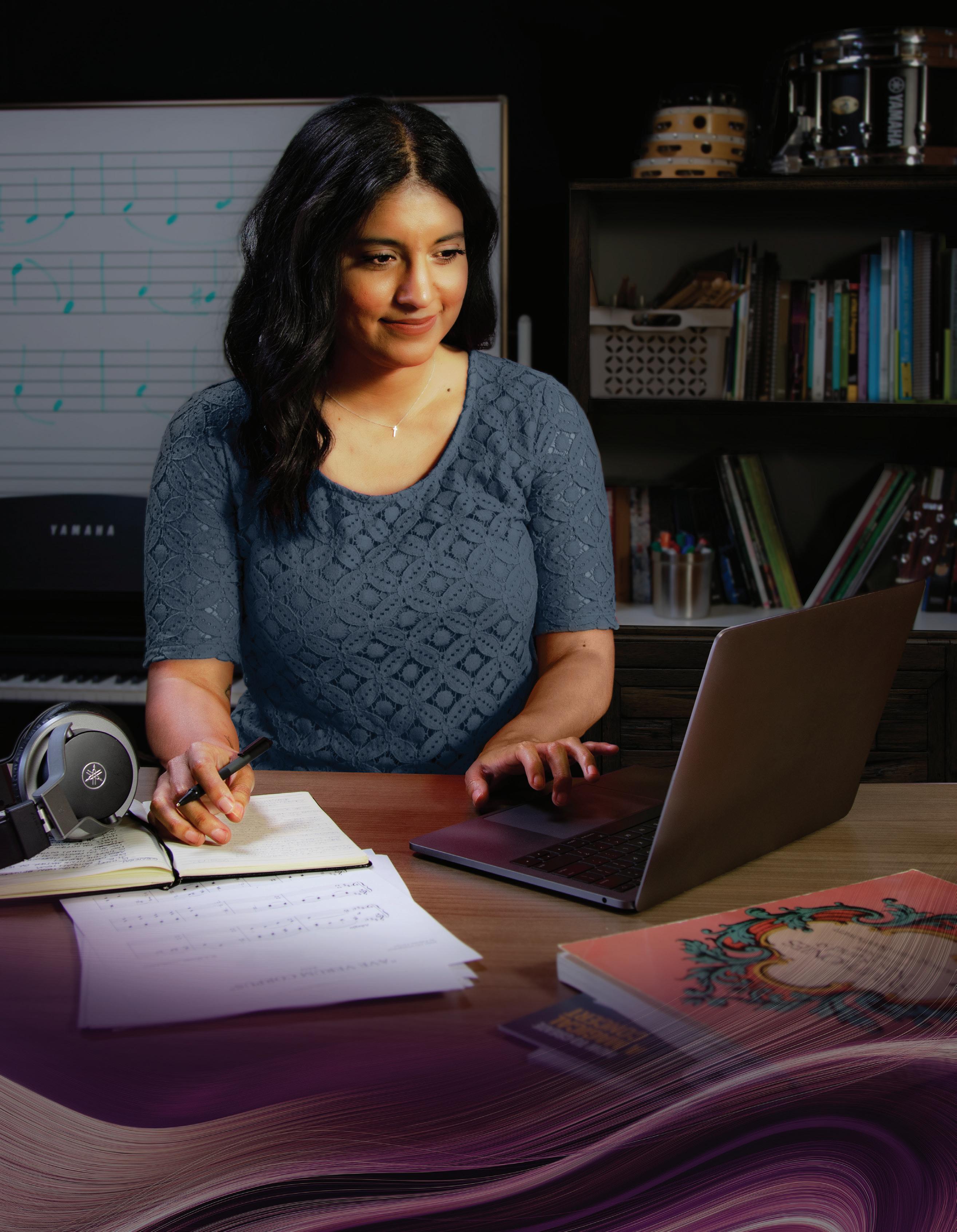
Gold Level Sponsors Gold Partner - Annual Cost: $650
• Website listing with logo and web link on corporate sponsorship page of website
• Exclusive Gold Partner access to CMEA direct sponsored email pricing+
• Company name designation with URL link in each CMEA Magazine
• 25% discount on all CMEA Magazine Advertising
• Company name and link as gold sponsor on CMEA state festival programs
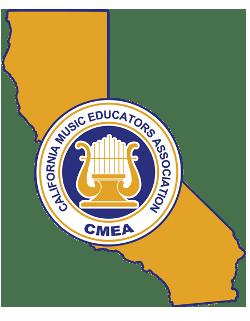
+see sponsored email marketing options below
Silver Partner - Annual Cost: $400
• Company name designation with URL link in each CMEA Magazine
• 15% discount on all CMEA Magazine Advertising
• Website listing with web link on corporate sponsorship page of website
• Company name and link as silver sponsor on CMEA state festival programs
Bronze Partner - Annual Cost: $250
• Company name designation with URL link in each CMEA Magazine
• Website listing with web link on corporate sponsorship page of website
• Company name and link as bronze sponsor on CMEA state festival programs

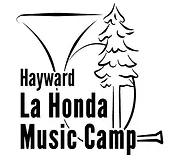
Reach your customers directly! As a Gold Corporate Partner, you can now have exclusive access to our members through CMEA sponsored emails. Each month, CMEA will send up to two (2) sponsored emails on behalf of our Gold Corporate Partners. Corporate Partners may submit content and formatting to CMEA, who will distribute your email to the members of your choice. Contact a staff member today for more information. Availability is limited. All email content is subject to approval by CMEA. Rates excluded from discounts.
Sponsored Emails
We will send a promotional email to our membership on your behalf. Sponsored emails are only available for our Gold-level Corporate partners. Pricing below is for Gold-level Corporate members; all others will need to factor in the price of a Gold partnership also.

Pricing per Email (March - October)
• One (1) email to all Full Active Members: $350
• One (1) email to any segment (i.e. band, choral, orchestra, elementary): $250
Pricing per Email (November - February)
• One (1) email to all Full Active Members: $500
• One (1) email to any segment (i.e. band, choral, orchestra, elementary): $350
Back in November we were so excited about what would be happening this fall with the passage of Proposition 28! And we still are, but as you are probably aware, the California Department of Education has not yet released the actual final allocations for schools (as of early June), and many of us believe this will probably not happen for several months.
I have some suggestions for our headspace on this now:
• Breathe. The money is going to come—it has to by law. It’s just taking longer than we expected.
• Use the slow rollout to our advantage. Let’s make sure that district admin and principals are being strategic about how best to use the funds for greatest impact.
• By the way, let me be real: it might not be “best” for the funds to be allocated dominantly for your music program. How are dance and theatre doing on your site? How do students want to engage in art at your school? Has anybody asked them?
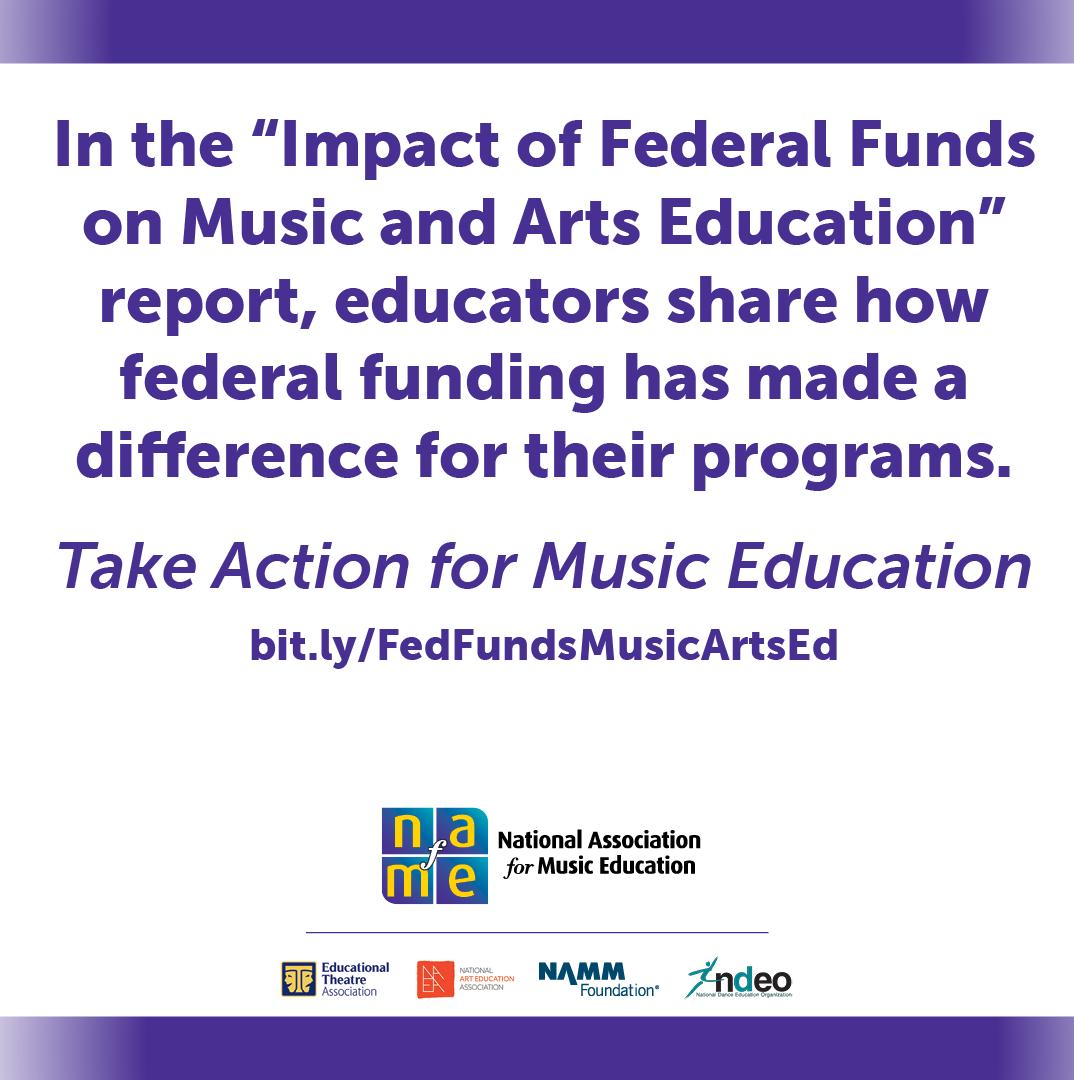
• The slow rollout is advantageous in the environment of a teacher shortage.
• Are you ready to help the new teachers?
I think it’s going to take several years for the public education system to absorb these new funds to their best use. We all need to pay attention and contribute our expertise on behalf of the students we serve.


I look forward to hearing from each of you and supporting your elementary music needs in the state! Please take a minute to answer this short survey.
CMEA Elementary Music Rep
Congratulations on getting through what we hope was a good year for you and your program! While it is fresh in your mind, hopefully you have been able to think a little bit about your year: How did it go? What went well? What didn’t? Or, what worked out differently than you intended? If you would like to offer ideas that worked or perhaps brainstorm some that didn’t, please let us know! We are here to help. Megan Foley, your intrepid innovations rep, is eager to hear from you! Please fill out this form to reach out with ideas or if you need to talk through making something happen for your program!
Megan Foley CMEA Innovations Representative

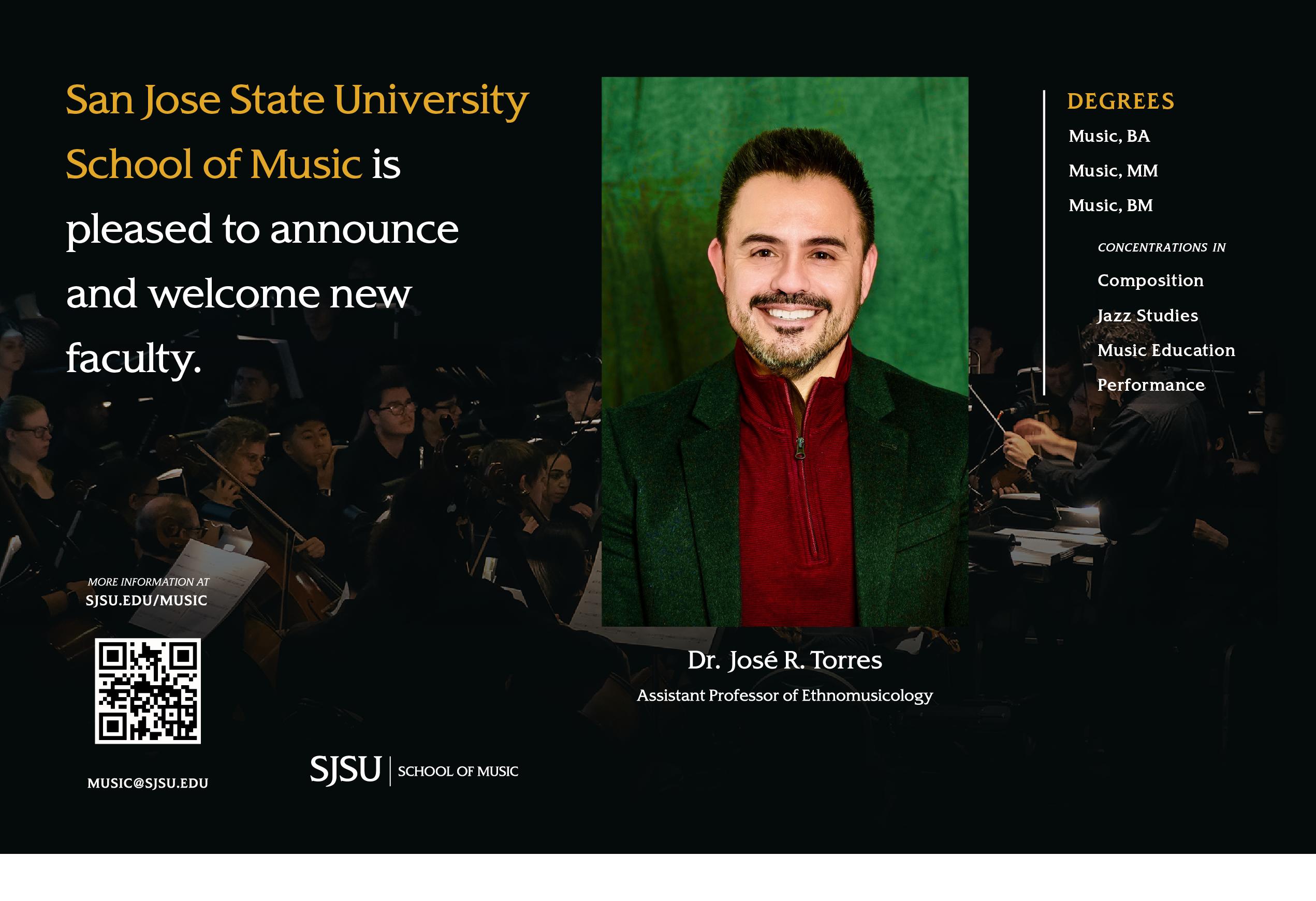
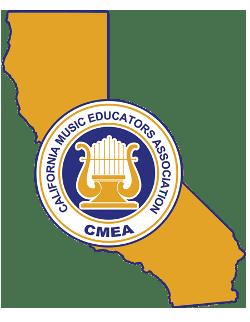
 Maya Garcia Reedley High School
Maya Garcia Reedley High School
 Sandra Lewis Bay Section President
Sandra Lewis Bay Section President

Here in Bay Section we have just finished out our first “normal” festival season since COVID hit in 2020. We had some “bumps” along the way as we reacquainted ourselves with director, site host and festival protocols, but overall Bay Section students and educators seemed thrilled to be performing for our adjudicators.
We also had a significant response to our festival feedback forms this year and as you can imagine, these survey forms help the board look at areas for improvement for both adjudication and our festival sites.
Since this was my first year as acting president, I must admit that I had my share of “bumps” as well. I am very grateful for the support of the CMEA State Board. When our school Zoom no longer had unlimited minutes, Trish Adams, the CMEA State Executive Administrator, graciously helped our section out by logging on our board meetings with the State Zoom link. I am also grateful for Anne Fennell for her wonderful keynote presentation at the Bay Section Winter Conference in January.
Also crucial to our success this year was the unwavering support that I received from our Full Board and of course the expertise and knowledge of our Executive Board.
The many years of experience from our current Bay Section Executive Board definitely helped keep the year running smoothly. I would like to publicly recognize and acknowledge Keith Johnson, Past-President; Craig Bryant, President Elect; Angelina Fitzhugh, Secretary; Paul Lorigan, Executive Secretary; and Bruce Lengacher, Adjudication Chair. Our current Treasurer, Tim Walker, had to leave this year due to health concerns but I am happy to say that we now have a new Treasurer, Joe Kelly, whose enthusiasm and interest make me grateful for his willingness to accept the position.
A few months ago, I was looking at the end of May as a symbolic finish line. As I started to prepare for the end of the musical school year and the various Bay Section festivals and meetings…. I began to think about NEXT year! I reflected on some of the challenges and success that we experienced and started to plan on how to implement and streamline certain things for our conference and festivals next year. As I write this article, our CMEA Bay Section Executive Board will meet at least twice this summer to discuss and clean up various forms and procedures, and we are excited about piloting some new ideas at our festivals next year.
I know that all of us will have a chance to recharge this summer with music, friends and perhaps even a change of scenery as we visit with family. As you are away from the “job” of your classroom, boardroom or podium, feel free to reflect on things that you think went well and other items that you would love to change. Without deadlines and crucial rehearsals looming in the background, it is sometimes easier to gain clarity and solve some of the issues that seem so challenging while the school year is in progress.
I hope you have a relaxing summer and I am looking forward to the next academic year!
Advocating for visual and performing arts (VAPA) education and resources can, many times, seem like an unending battle with nothing but failures and defeats. There are times, however, when through teamwork, perseverance, and maybe even a little bit of fate, advocacy efforts can pay off. The following is one success story from my little corner of the Capitol Section that I hope will inspire others to start or continue their own advocacy efforts.
In the summer of 2018, I had just finished my 4th year at my current job in the Elk Grove Unified School District (EGUSD). I was one of several Arts educators and community members who attended a school board meeting to advocate for VAPA education and resources. We had no idea how important that meeting would turn out to be for the long-term health, survival, and growth of EGUSD’s VAPA education. We were there to request solutions for three big VAPA needs: 1. a comprehensive VAPA education growth plan, 2. a district-level VAPA Director, and 3. regular district
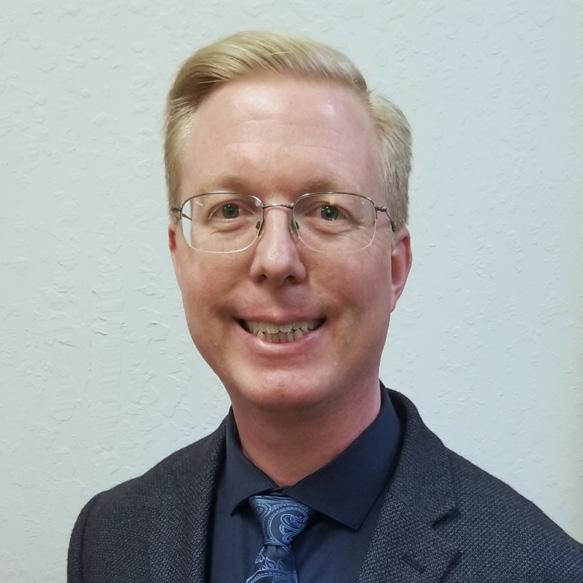

funding for existing VAPA programs.
The EGUSD school board listened, understood the needs, and immediately took steps to chip away at those three big needs. The district began providing much-needed funds to already existing programs all across the sixth largest school district in the state. The money was used for instruments, instrument repair, sheet music, chairs, stands, etc. In addition to the funding, the already-existing district VAPA Steering Committee created the first version of our EGUSD VAPA Education Plan. In 2019, a VAPA Director was hired and the VAPA Education Plan was adopted. All three big needs were met and great things were happening!
In early 2020, two things happened that nearly spelled disaster. The new VAPA Director resigned and immediately afterward - bam! – COVID hit. There were so many questions, so many obstacles, so many unknowns. But thanks to the wisdom of our school board, a new VAPA director, Jennifer Wilbanks, was hired right away. Mrs. Wilbanks has been a champion for VAPA programs in the EGUSD as well as Capitol Section ever since. She was one of several district-level VAPA leaders across the Capitol Section that met on a regular basis to plan for specific VAPA needs during Covid. As for our school district, Mrs. Wilbanks made sure we had everything we needed to make music during all the phases of Covid - 100% online, hybrid classes, as well as the transition back to 100% inperson learning in the fall of 2021.
This year has been an incredible year thanks to the continued
support of the EGUSD school board, administration, and VAPA education community. The district hired 4 VAPA Coordinators to assist Mrs. Wilbanks at the district level. The district partnered with the Mandarins Drum and Bugle Corp to provide before/after school beginning band classes at all elementary schools. Funding was provided for three festivals: a district jazz festival and two concert band festivals in partnership with the Capitol Section’s Golden Empire Music Festival. In addition, funding continued to be provided to existing VAPA programs.
If your own advocacy efforts feel overwhelming, don’t give up. Every little victory matters, and sometimes they can add up to big changes in the long run. Hopefully, with the funds from Prop 28, and this example from my own little corner of the Capitol Section, other schools districts, schools, and teachers in the CMEA can be inspired to continue their own advocacy efforts.
 Michael Tackett
Michael Tackett

Central Section Past President
It has been one of my greatest honors to serve as the CMEA Central Section President over the past two years. How the time has flown! I am excited for the future and to witness the magnificent work Elisha Wilson, our new President, will complete over her two-year term. Congratulations also go out to our PresidentElect, Ashley Shine-Dirlam, and newly elected Secretary, Victoria Kuykendall. All three ladies are great assets to our section!
During May and June, we were busy completing the revision of our Section Handbook and By-Laws. At our final yearly meeting/ dinner in June, we honored several retirees and two outgoing board
members. Congratulations to these Central Section retirees for their hard work and dedication to music education: Brad Pickett, Martha Redstone, Rebecca Trevino, Kim Ream, Donna Steigleder, Dr. Thomas Hiebert, Peter Vanderpaardt, and Anne Hendrickson. These educators gave countless hours for the success of their students. We appreciate their service to music education.
I would personally like to thank our two outgoing board members Tony Mowrer and Steve McKeithen. Tony was on the board of directors for sixteen years and served the past several years as our secretary. Tony was the “go-to man” and could usually answer questions no one else knew the answer to. Steve served two years as President-Elect, two years as President, and the past two years as Past-President. Steve really helped me out with the transition into each of my positions and did a marvelous job getting us through the horrific 2020-2021 years. Thank you, Tony and Steve, for serving the CMEA Central Section!
Looking ahead, we will be filling a few other positions on the board. If you are interested in serving the Central Section, please contact Elisha Wilson through our website to inform her of your interest.
I am thrilled to serve two more years as Past-President and look forward to the progress our section makes in serving our music educators!
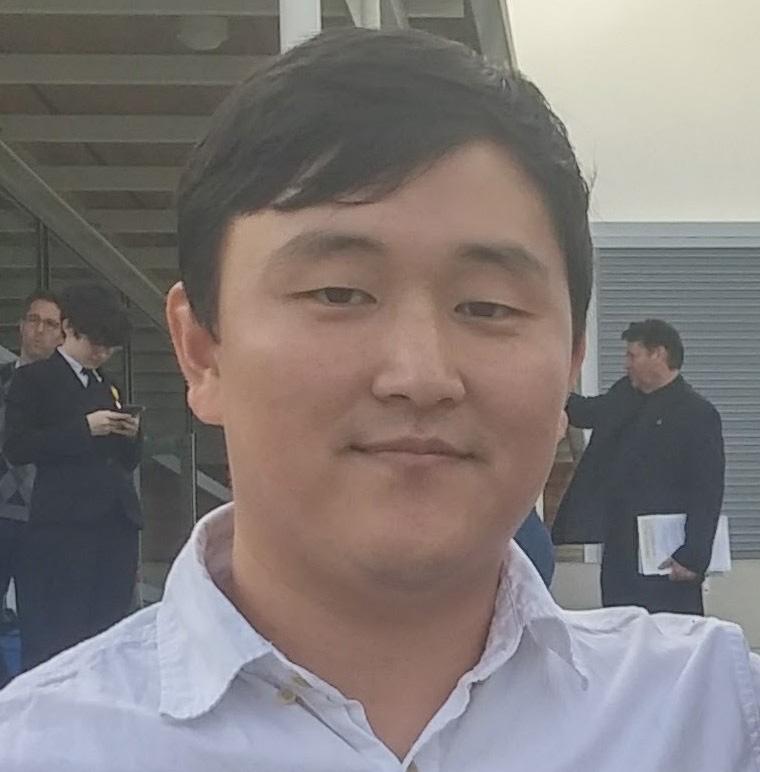
I want to thank all the Central Coast teachers for their input, time and patience as we did our best to transition back to normalcy. Our honor events were successful and it was great to have a live audience this year. Next year, we hope to bring back our festivals to full normalcy as well. Out of the four festivals, YES! (young ensemble showcase), solo, instrumental and vocal festival, we successfully had our YES! and solo festival happen, but not our instrumental and vocal festival due to the rainstorm that flooded many parts of our counties. The rainstorm made many mini islands of certain towns and cities in which roads and schools had to be
closed down for a few days.
So here are our goals for the next school year:
1. Bring back more schools to audition for the honor event
2. Bring back all our festivals, and hope Mother Nature does not interfere again
3. Update our by-laws


4. Outreach to San Luis Obispo county
I want to take this opportunity to thank our CCS board for helping me get through this school year acting as president. I really appreciate Diane Gehling and Maria Carney giving me guidance and advice on how to approach many situations where I felt lost. I also want to thank Barry Capiaux, president elect, for taking over one of our honor events as MC as I was getting ready for the birth of my first child. I am not going to lie, there were a lot of bumps in the road, but I had a great team that helped me go through the times where I felt the most stress and troubled.
As the new school year is about to start in a few months, I cannot wait to face the new challenges that are approaching and with a great support team, I believe we can get anything done.
Right now our calendar seems to be up to date with board meetings and events penciled in, and the only changes we had to make is our High School Honor Band/Orchestra. Our usual dates for that event are the same week as CASMEC, so we decided to change the event from February 1st-3rd to February 8th-10th.
Collin Kirkwood
North Coast Section President
We have had an eventful few months on the Northern Coast. In March we held our All-County Music Festival which showed off our 6th through 8th grade students. They only had two days to rehearse and they put on a wonderful concert. We had a High School Jazz Band, Orchestra, Concert Band, and Choir, as well as a Middle School Band, Orchestra, and Choir. We had students representing 24 local schools. It was amazing to see the high level of musicianship that is happening in the North Coast Section.
In April and May we held our Jazz Festival, Choral Festival and Instrumental Festival. The musicianship that the students demonstrated was exciting to hear. It was also nice to see students happy to be performing for each other. I know my students were very happy to see other schools performing and kept talking about how great everyone did.
We had a chapter-wide meeting this past weekend to plan events for next year. It was nice to see so many teachers taking time out of their weekend to discuss how best to service students next year. We are planning on holding the same festivals as last year and we already have all the dates figured out. We are also bringing back a Middle School Instrumental Music Day. Our goal is to get all interested middle school students in our chapter to receive a day of group instruction on their primary instrument by a qualified musician/teacher.
Daniel Sedgwick is a high school teacher in our chapter area. He has a very exciting instrument repair program that he started a few years ago. We wrote a brief history about how he got the program started and why he thinks other districts should start their own instrument repair programs. He asked me to include his message in this article.
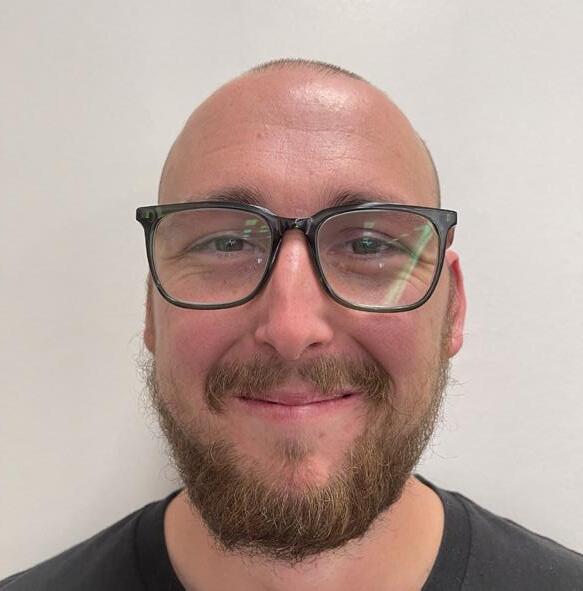
Unless I am mistaken, I am the only teacher that is currently teaching band instrument repair in the high school setting in California. This was not always the case, and there were two more, but for various reasons those programs are no longer running. Even if we had all three programs running, it would not be enough. But I get ahead of myself - first a brief history. If you’d rather skip the history, just move on to paragraph five.
Del Norte County is the furthest county north on the California coast. When I started teaching here 15 years ago, the band program was strong but we had a huge problem. Our old inventory was not great and every year we had a choice: fully fix a few instruments a year or get as many instruments “playable” as cheaply as possible. I saw a lot of that working in a repair shop in college. Right away I started using the skills I gained working at the repair shop to make the inventory better. I started with basic
pad work, eventually moving to tenon corks. Word that I could do basic work on clarinets and saxophones got around very quickly. This allowed us to spend our very minimal budget on some of the larger projects to make them playable instruments again. While it did help, it still felt like putting band aids over older band aids. This stayed pretty much the status quo for about 6 years.
back, we had a middle school student drop a bari sax to the ground and it was not pretty with bent posts, bent keys, and body damage. One of the students was able to get it playing within two hours!


We now have a comprehensive parts closet and can fix/repair almost any issue that comes up. This coming school year, the Instrument repair class will fall under CTE (Career and Technical Education), and I now have my CTE credential under the Arts, Media and Entertainment Pathway. This program has challenged me and pushed me to grow and expand my education. I started out doing tenon corks and clarinet pads but now I can take apart a tuba, silver solder broken braces, remove dents and put the tuba back together. I became a member of NAPBIRT (National Association of Band Instrument Repair Technicians) and feel very much part of the repair community.
After year six and having more and more instruments going out of commission due to more severe damage, which I did not know how to fix, I decided it was time to do something more. A new colleague, Sara Rogers, joined the district and she was more than willing to go on this journey with me. Sara and I decided that trombones were the next step, as well as stuck trumpet slides. After a lot of Youtube videos and me apprenticing with a veteran instrument repair technician, Nick Rail in Santa Barbara, during my summer, we got very good at taking out the major dents from trombone slides and removing stuck slides from brass instruments. Sara is a rock star at repairing flutes. We made a deal that if I did tenon corks, she would do the flutes, and I very happily agreed! We did this for about three years but it still wasn’t enough.
We decided to dedicate a space for doing just instrument repair. We set up the shop and this helped us streamline and organize what we were doing, but the space was still not big enough. At this point we were servicing most of the instruments at DNUSD (Del Norte Unified School District) but only on an as-needed basis. In between moving the shop - the instrument repair class was born! The shop was really an oversized closet and the class had six students. It was very convenient during COVID-19 learning because only three students were allowed in the shop at once. The biggest problem was that there was no storage room. The class was also just an elective housed within VPA (Visual and Performing Arts).
Fast forward to today - here is where we stand. I now teach two instrument repair classes with 8-12 students in each section, and we have a shop that is 25’ x 60’ with a dedicated station for each student in the class, plus communal stations for dent repair, buffing, ultrasonic cleaning, and more. For the past 2 years, every instrument at DNUSD gets run through the shop for preventative maintenance at least once and we typically have less than a 24-hour turnaround on issues as they come up. And this is mostly student done. Of course Sara or I take care of the more challenging tasks, but most repair at this point is being done by the students. Getting instruments repaired faster has meant students aren’t waiting weeks to get an instrument back from an out-of-town shop. A couple years
Instrument repair is an important trade both for music education and the music community at large. If we do not have enough repair techs, our horns do not function properly. Students need to have quality and functional instruments to succeed in music. We are very short of qualified technicians in this sector. As a member of multiple service organizations, most tell me the same thing over and over: “We do not have enough techs in our area.” I was even approached by an employee at Yamaha regarding how we can get more classes going at the high school setting in order to start training the next generation of repair techs.
This article today is mostly about the backstory on how we achieved getting an instrument repair class at Del Norte High School. More importantly, I would like to start the conversation now about how other school sites across the state and country can start a program too. Rural areas like ours can rarely support a qualified repair technician in the area due to the small size. But, if a school district were to have a class with repair basics, they would only have to send out the difficult repairs, which could be a game changer for most instrumental programs. Not only would this save the district money, but it would also help ensure that future students will learn using functional and well-maintained instruments.
In conclusion, I am passionate about instrument repair and I am more than willing to help other school districts start a program. We have a desperate need for repair technicians in this state and also around the country. With a 95% job placement rate, students who go on to pursue a career in instrument repair will find a job with little to no trouble. Instrument repair programs have the potential to save districts money, prepare students for a profitable career, and also keep school instruments in good condition for all students.
If you have any questions for Daniel Sedgwick about the instrument repair program, feel free to email him at dsedgwick@ dnusd.org

 Tanner Johns Northern Section President
Tanner Johns Northern Section President
For as long as I’ve been associated with the Northern Section board I’ve asked the questions, “what does this organization do for its members and how can we better serve our membership?” With that in mind, I’d like to take a moment to highlight something new this year from the Northern Section - the Northern California Music Teacher Institute.
This week of professional development offered by CMEA-NS is for new and experienced teachers, and even collegiate membership. It’s going to be an incredible week and districts have professional development money to send you. Not only that, but if you register for units, complete the course, and are a CMEA/NAFME member from the Northern Section, your CMEA-NS chapter will reimburse you for the cost of those units - units that can advance you up your district salary schedule.
I hope everyone is taking advantage of their summer to refresh and reset. Please reach out at any time if you have questions about the Northern California Music Teacher Institute.
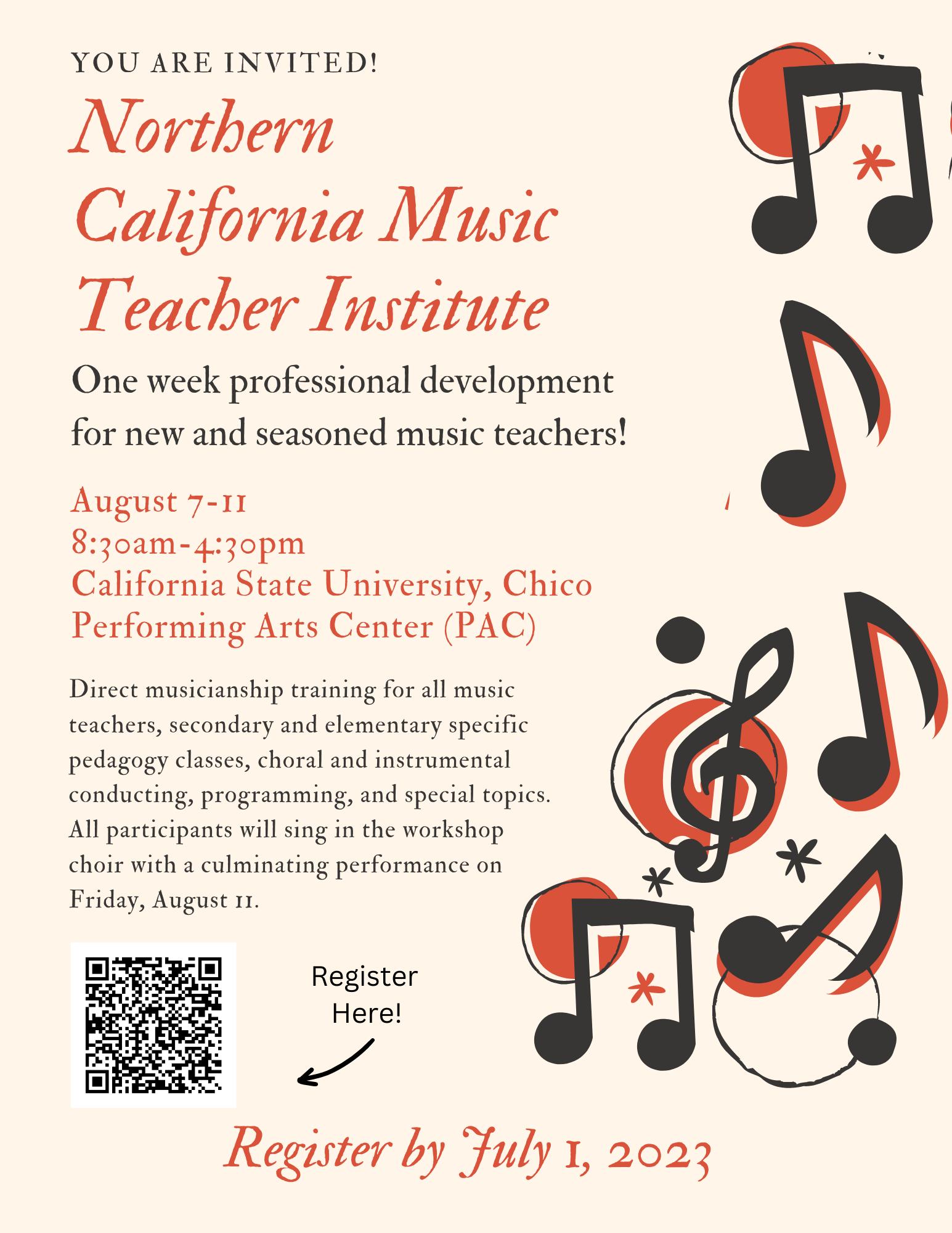

I think we all love stories. Can probably even say that it is often the stories that continue to inspire us to teach and make a difference. They help to remind us of why we work so hard, day in and day out, and even over the summer.
We make a difference. Small acts can have a huge impact.
About a year and a half ago, a wonderful man by the name of Ron Wakefield made contact in an effort to bring some kids from Mexico to the LA area for a musical experience. Some of you may remember him. He established an award-winning program at North Park Middle School in Pico Rivera. He has since left there to pursue his passion for helping underrepresented and underprivileged children experience music making. That journey is a story for another time.

He has been in Tijuana for a few years now, working with the children who live in the poverty-stricken slums, providing music education for them, giving them a different way to experience life. He started a string group. He wanted to bring that string group to the States to perform. This would involve getting visas for the students - no easy task! Letters to the consulate were sent, dates were scheduled, concerts were tentatively organized. This was a long-term project and had been in the planning and process stages for over a year. Just weeks before the scheduled trip this past May, the students had still not been interviewed for their visas. And then it happened. The students had interviews and were granted visas. The trip was on! Their itinerary was packed, as directors know that is the best way to keep the kids out of trouble. Everything they experienced was new: traveling by van, leaving their town, crossing the border, eating at In-N-Out, seeing new places and people, and the performances. They had several performances. They performed at churches and even at a private party that was organized especially for them. Their final performance was at a college where they performed with the college and two other high schools. The final number was a mass orchestra selection. All the kids had pizza together. The group from Tijuana had concert attire that had been specially sewn by one of the moms just for this performance. To say that this experience went past the musical aesthetics would be an understatement. Every one of those kids in that orchestra now have a visa and they have established a path to legally and safely travel to the United States. This could quite possibly change the trajectory of their family lineage. So how was the music? It was sublime.
The resonance, accuracy of pitch and rhythm, musicality, all of it. Evidence of pedagogy was on full display. But more importantly, there was emotion and that strong sense of family. When the groups combined for the final number, it was one big family, and it was breathtaking. Subsequent trips are already being planned, this time with more students from Mexico. And it all started with a willingness to create something together, through music.
We make a difference. Small acts can have a huge impact.
And as far as the CMEA Southeastern Section activities? Well, we recently had an amazing inaugural Mariachi showcase that was hosted at Sunkist Elementary School in Anaheim. The groups that performed were so much fun to listen to and it felt really good to witness every group having a large appreciative audience. This event is sure to grow in popularity and reputation as we expand our reach to provide our area with services and resources. The section is making plans for another leadership symposium, next year’s Mariachi Showcase, and collaborations with various groups to bring additional festivals to the region. Enjoy the

summer! Some may only have a few days off or just a change of pace, or activity. Regardless, enjoy!
 Emma Schopler
Southern Border Section President
Emma Schopler
Southern Border Section President
Hello, everyone. My name is Emma Schopler, and I am your new Southern Border Section President. First and foremost, I congratulate my mentor and predecessor, Dr. Jeffrey Malecki. He has led our section for six years, and welcomed me to San Diego with open arms. My first conversation with Dr. Malecki was about creating opportunities for Elementary aged children. We all have that “teacher” who made a difference in our lives and inspired us, correct? Yes! For me, that educator was Dr. Malecki. He believed in me, and because of his encouragement, we were able to give children access to music education festivals. I learned from Dr. Malecki that things are truly great at the bottom of the state. As I reflect upon the school year, I find it imperative to look within and remind myself of our section’s “why?” When we focus on our shared goals and purpose, our ability to persevere and demonstrate resilience grows stronger. Please take a breath with me, inhale…..and exhale. Let us remember that we are here to continue advancing music education by supporting the study and making of music by all. With this in mind, we welcomed the new San Diego Kodály Chapter to our Southern Border and partnered for the Kids Create Music Festival, a collaborative community event supporting music education and advocating for equitable access to music. I would like to share that I am honored and humbled to lead the Southern Border Section of CMEA, and I am delighted to be serving alongside Abbie Gerdes (Treasurer), Aaron Mulder (Secretary), Jonathan Seligman (Instrumental), Michael Sakell (Choral), Dr. Jenny Gee (University), Jeff Bertrand (Industry), Jack Erb (Mentorship), Karen Koner (Communications), Marc Dwyer (Webmaster), and Cameron Brown (Festivals). Please know that the Southern Border Section welcomes all people irrespective of age, race, color, ancestry, national origin, ethnic group identification, religion, marital or parental status, physical or mental disability, sex, sexual orientation, gender, gender identity, or gender expression, and that it is our intention to ensure inclusivity and access is equitable for all musicians, especially BIPOC, and LGBTQIA+ in our community. We are very excited to see and meet our CMEA friends in Sacramento at CASMEC 2024.

Our collegiate members had a wonderful year. At San Diego State University, the CMEA members joined the seniors in music education at CASMEC, organizing and leading the San Diego State University School of Music and Dance recruitment booth, after receiving funding from an SDSU Student Success Fee proposal.
Students created marketing materials, informational flyers, and other promotional materials to share with attendees, while attending sessions and enjoying the performances. We look forward to another eventful year for the collegiates in the Southern Border Ssection!
In the 2022-2023 school year, the CMEA-SBS was able to plan and execute several choral events which spanned San Diego County. On March 13, 2023, we hosted our first secondary choral festival since COVID. Juan Acosta, Kathleen Hansen, and Jenn Opdahl served as adjudicators for this event held at Poway High School. Eleven different choirs from seven different high schools participated, including Poway HS, Rancho Bernardo HS, Westview HS, Olympian HS, Sweetwater HS, Chula Vista HS, and San Ysidro HS. CMEA-SBS created an intergenerational music event called Kids Create Music Festival which was held on Saturday, May 6, 2023. It was presented by Southwestern College Performing Arts Department in collaboration with CMEA-SBS, San Diego Children’s Choir, San Diego Youth Symphony, San Diego Kodály Association, San Diego Orff-Schulwerk Association, and family volunteers.

backgrounds that are represented in each of her classes. Initially, she examines the School Accountability Report Card (SARC) for each school she teaches. This report provides information regarding how students identify and the potential for differentiating cultural experiences through music that can assist in choosing and developing teaching materials representative of her students.
While she chooses the songs and materials that are learned, she opens opportunities for students to make choices. She found that her students often request songs that have accompanying movement with them. Her students engage best when they are active.

In addition to her students-first approach, she consistently finds opportunities to acquire classroom inventory and learning opportunities. Grants are one way she has supplemented the district’s budget for music. For example, she wrote a $17,000 grant to the RuMBa Foundation of Long Beach that provided 35 drums for four of her elementary schools. This led to a classroom Drum Circle Project that develops each student’s unique musical voice while fostering a sense of community.
Valerie also brings guests to schools as well as takes students on field trips. She was instrumental in bringing Baba the Storyteller (https://babathestoryteller.com/) to interact in different grade-level assemblies. Additionally, she takes her students on field trips like the Museum of Latin American Art (MOLAA) where students sang a song for everyone in the lobby. By inviting individuals in to offer personal insights and taking students on field trips, her students are broadening their own knowledge while expanding their own viewpoints.
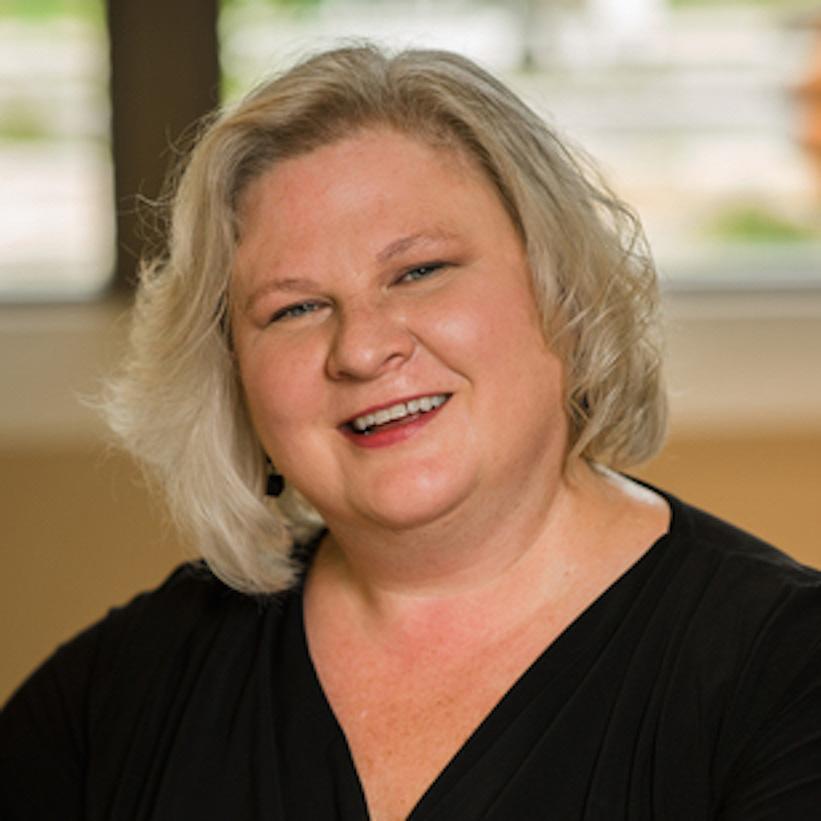
Valerie Vinnard is a 24-year veteran elementary general music teacher in the Long Beach Unified School District. She currently serves five elementary schools, some of which include dual immersion programs. As a dual citizen with Brazil, Valerie shares her own background while supporting the cultural backgrounds represented in her classroom through students. This grounding lays a foundation for her to continuously develop as a teacher-learner, diversify opportunities for her students to learn, and advocate for elementary general music education.
I had the opportunity to chat with Valerie shortly after she learned she was a quarterfinalist for the 2024 Grammy Music Educator Award. The Grammy Music Educator Award recognizes current educators—kindergarten through college, public and private schools—who make significant and lasting contributions to the field of music education and who demonstrate a commitment to maintaining music education in the schools. Valerie shared her priorities in developing as a teacher that led her to this honor. The following is a recapitulation of this interview that highlights three important points to succeed in the field of music education.

First and foremost, Valerie focuses on her students’ cultural
Valerie is a consummate advocate for music, especially elementary general music. Because elementary general music does not necessarily have the well-attended public performances of a marching band or choir, elementary general music can easily be overlooked for the important foundation it instills in children. Elementary general music is an important foundation for students to develop a love and potential continuance of learning music in schools.
Making sure that others know what happens in an elementary general music classroom is a mission for Valerie. She consistently posts pictures and activities that occur in her classroom on social media. She invites the Board of Education and Superintendent to her musical events. Valerie also consistently writes short articles for their School News Role Call publication highlighting differing topics that have included social-emotional learning, closing the achievement gap, differentiation in the classroom, and culturally responsive and sustaining pedagogies. Each of these ideas offers opportunities for parents and the community to better understand the impact of music in the lives of children.
Valerie articulated that she is constantly learning. She earned a Masters in Music Education, is trained in Kodály method, and is acknowledged as a National Board Certified Teacher. Additionally, she is a member of Delta Kappa Gamma, a society founded with a purpose to improve opportunities for qualified women employed at every level of education, as well as to advance the status of women educators. By furthering her education, participating in collegial professional opportunities, and infusing her persistence and drive, Valerie continues to develop as a teacher-leader who is clearly being recognized.
4four is full of rhythm activities and generators, as well as digital instrument activities. I use it to practice rhythms with my general music classes, reinforce and test rhythmic knowledge, and offer opportunities for my students to be creative.

From dice to memory, the apps are designed to be editable (to allow for differentiation) and easy to use (students can use them independently). There are even mini sequencers and loopers with which to play!

If you are looking to add some variety to your music instruction, check out 4four!
Teagarden Jazz Camp
Teagarden Jazz camp
Registration is underway for the 37th annual Teagarden Jazz Camp at Sly Park, CA. Students ages 12 through 20 receive daily one-on-one and ensemble instruction,with emphasis on improvisation, plus nightly performances and end-of-camp concert. Two one-week sessions, July 24-29 and July 31–August 5. Students can apply online at www.sacjazzcamp.org or call Camp Director Bill Dendle at 916-804-9470. SCHOLARSHIPS ARE AVAILABLE!
Do you have students who cannot afford their own instrument? If so, have them apply online at https://sacjef.org/instrument-match/. Restricted to students in the greater Sacramento region, and subject to available inventory.
The perfect tool for Music Educators dealing with online teaching. FREE videos available on a multitude of topics, suitable for beginner to advanced, student or adult. Check it out at www.sacjef.org
We are excited to share that NAfME state leaders, advocates, and members of the Music Education Policy Roundtable returned to Capitol Hill on June 23 for our first in-person Hill Day since 2019. Attendees met with their members of Congress to advocate on behalf of music education and the teaching profession. Hill Day is not limited to members in the DC area, we encourage members at home to reach out to their representatives using this campaign to add their voice in support of music education!
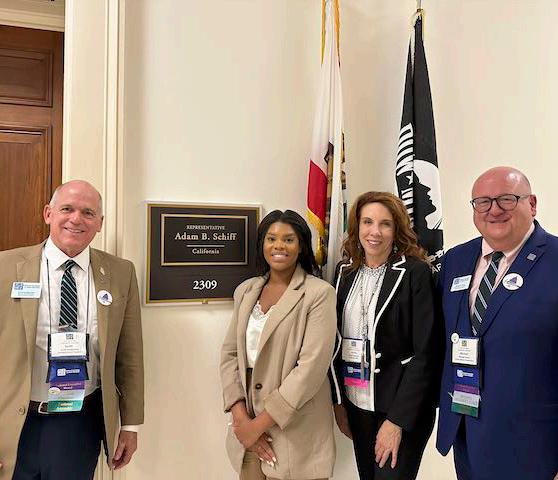
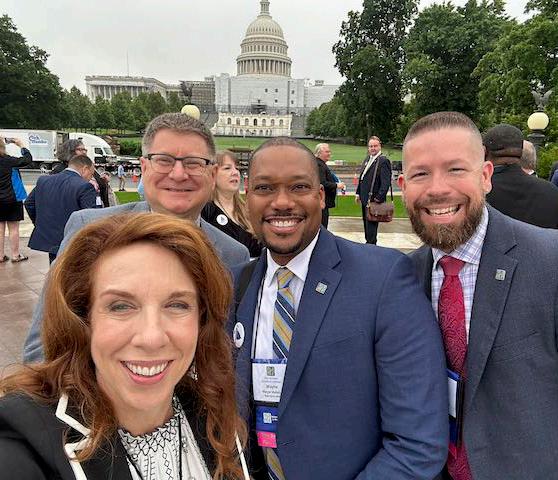
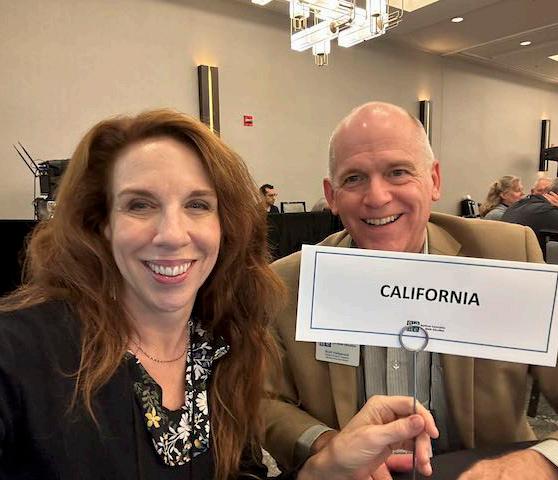
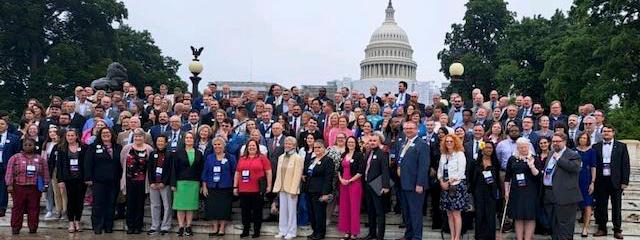




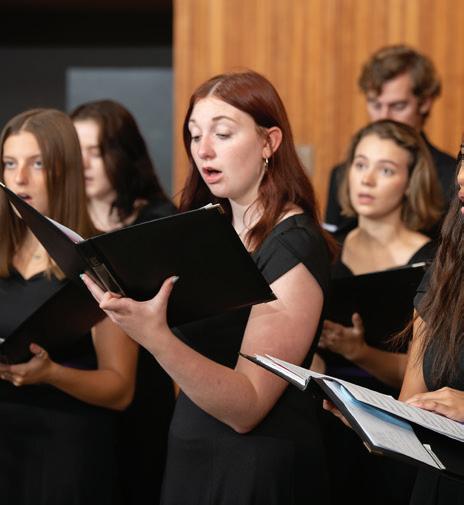

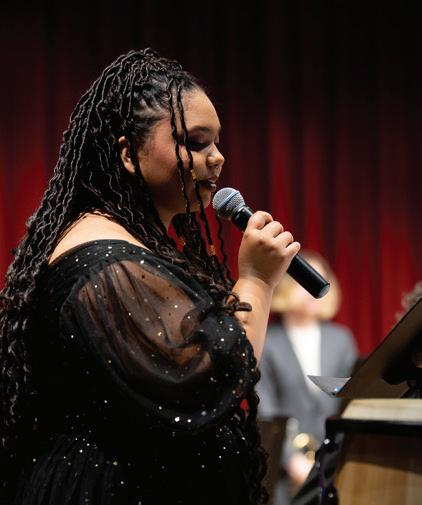

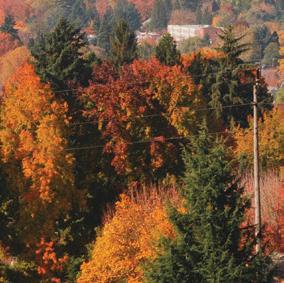

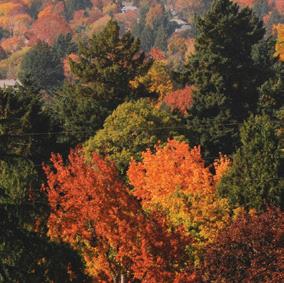
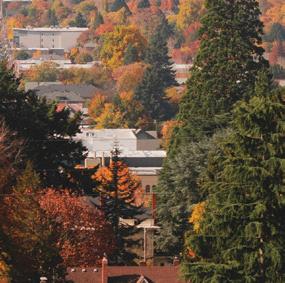












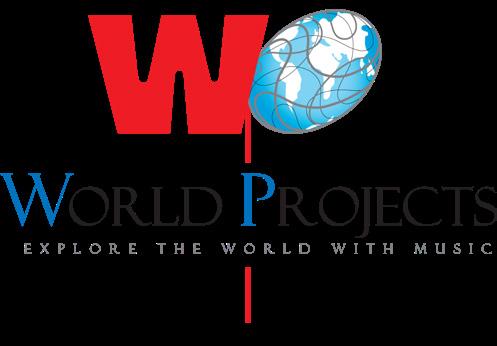
The California State Band and Orchestra Festival, presented by World Projects, will be held on Saturday, April 6, 2024, in the brand-new, state-of-the-art theater at Cerritos College in Norwalk, CA (only 13 miles from Disneyland).


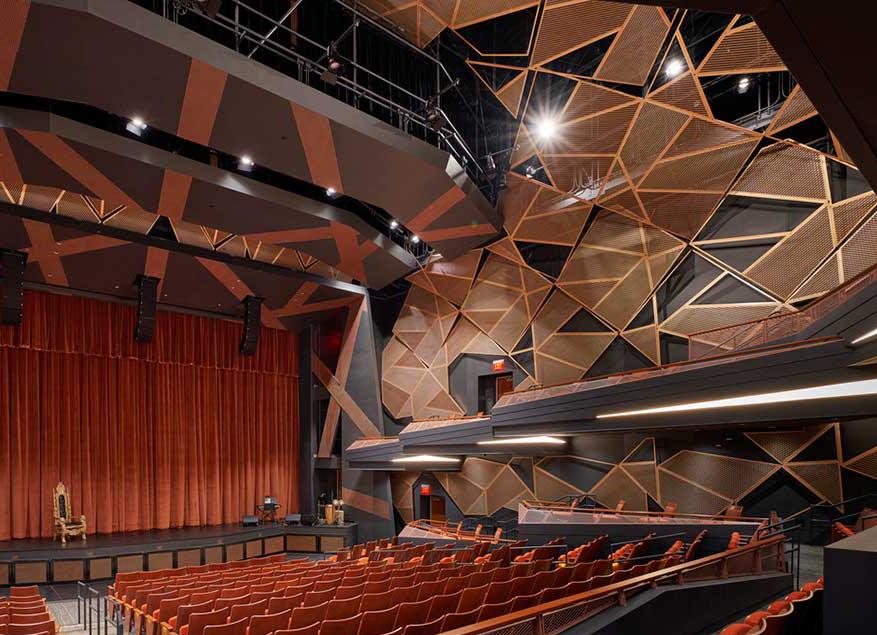
Participating groups must have received a Unanimous Superior rating at a CMEA-sanctioned festival or have participated in a Comments-Only CMEA-sanctioned festival during Spring Semester of 2023. CMEAsanctioned festivals include festivals hosted by CMEA Sections, the Southern California School Band and Orchestra Association (SCSBOA), and the Northern California Band Association (NCBA). Participating directors must be members in good standing of CMEA both at the time of application and the festival performance. Applications include a recording of the ensemble performing approximately 15 minutes of music with at least two works that best demonstrate the group’s abilities. All recordings will be uploaded with the online application, which is available now on the CMEA website. The due date of the applications is Friday, September 1, 2023. Directors will be notified of acceptance by September 22, 2023.
In addition to submitting audio files and copies of qualifying adjudication sheets, the application asks for information about your school size and demographics. The intent of this festival is to showcase outstanding band and orchestra ensembles that represent the diversity of our great state.
The Spring 2025 festival will be in Northern California in Weill Hall at Sonoma State. We plan to return to Cerritos College in Southern California in Spring 2026 and continue this pattern into the future.

Each ensemble participating in the California State Band and Orchestra Festival will receive recorded comments from a panel of three prominent adjudicators and receive a 20-minute in-person clinic with one of the adjudicators immediately following the performance. You must provide three original scores for each piece your ensemble will perform.
The competitive aspect of this festival is the selection process. All ensembles that have been selected and perform at the festival will receive an “Outstanding Performance” plaque following their performance.
The participant fee for 2024 is $475 and is due no later than November 30, 2023.
Contact John Burn, CMEA State Band & Orchestra Festival Coordinator, at jburn@calmusiced.com.



Singing in the secondary large instrumental ensemble is not a new concept - many ensemble directors use singing as a tool. However, much of the singing we see in middle and high school bands and orchestras is purely rhythm-based, with little to no focus on pitch in the singing. This can be a very effective tool for isolating rhythms in the learning process, but leaves a powerful learning tool out of the equation. Borrowing a concept from our general music colleagues, solfege and pitch-accurate singing can be a way for students to increase their ownership of sight-reading in the large ensemble, and to gain much more information from the page before even playing their instrument. This article will focus on the middle and high school string classroom, but essential concepts can certainly transfer to band instrumentalists as well.















































As ensemble directors, we are trying to instill skills and techniques in students to help them be as self-sufficient as possible with notes and rhythms. This autonomy then allows the ensemble rehearsal time to be directed toward blend, balance, and concepts of group musicality. Pitch-accurate singing is one often-overlooked tool to add to your music literacy toolbox. Solfege symbols and hand signs are another language device, just like learning note values or understanding intervals. The focus is on the relationship between the notes, meaning we are using “Moveable ‘Do’” versus “Fixed ‘Do’” - the tonic of the key always becomes “Do”.
Producing the sound internally helps to ensure accuracy externally on the student’s instrument. Dell (2003) wrote, “The note must be prepared in the mind before the kinesthetic motions can be made to produce it. Without an internal reference pitch, an analysis of accuracy is difficult.” When students have a strong internal concept of pitch and can produce it, their audiation skills for sightreading become stronger.

Many instrumental ensemble students are reluctant to sing, even in programs with a culture of using singing as a learning tool. It’s important to create a safe space - no making fun of singing voices, and no mocking of the activity. Some helpful norms to

establish: the teacher won’t make you sing on your own unless you want to, and everyone must try their best. Grades are not assigned to vocal production, but students are taught to sing with proper posture and to use enough air when singing. Respecting the activity and setting the tone is important for this tool to develop, and it is possible for instrumental students to get very excited about singing time!
During the singing portion of warm-up, I briefly have my string players put their instruments in a safe spot and use their hands for Curwen hand symbols. The physicality of the hand symbols helps to establish relationships between pitches, and while it can be logistically challenging, I find the quick transition to be worthwhile. As we move through the curricular concept plan, students will also have instruments up and ready to play while singing, forgoing the hand symbols, so that we can quickly transition between singing and playing.
A brief version of my solfege curricular concept plan is below. When incorporating solfege to my middle or high school string classroom, I am adding in 3-5 minutes of dedicated singing time as part of warm-up, and staying on each step of the plan for as many days or weeks as needed. Of note, the players I work on this with are intermediate to advanced - while singing with instrument beginners is certainly encouraged, I would do so separately from learning instrument technique to avoid cognitive overload. There are companion videos to each step that I am happy to share via email, if you’d like to learn more.











































One additional benefit to solfege singing with ensembles: when students mentally “live” in the tonal world before playing, there are going to be fewer missed accidentals. When a string student can think about a lowered C natural on the A String, and has sung through the half step from the B before it, there’s a higher chance they won’t miss playing “low 2”. Of note, solfege singing becomes much more complicated with significant chromaticism - like any tool, you should know when to use it!

Solfege Singing for Sight-Reading with Strings
3-5 minutes of singing per rehearsal; timeline to teach each concept is flexible
Interested in video examples of each step? Feel free to contact me via email - touponticelli@pausd.org
Concept 1: Creating a Safe Environment
Concept 2: Finding Do
Concept 3: Learning syllables
• Comfort (activities that normalize singing, setting expectations)
• Form (singing posture, using air = using bow)
• Matching pitch (octaves OK)























































































• Audiating resting tone








































• Visually (concurrently with teaching Key Signatures)
• Audiating



• Singing resting tone after playing




• Find Do in each piece of music
• Learn concurrently with handsigns (instruments in a “safe spot”)

• Teach in order:
o Sol, Mi, Do first

o Re, La next (explore Pentatonic scale)

o Fa, Ti last
• Focus on relationships between syllables (whole & half step)
• Be able to sing, sign, do both, audiate, sing back
• Work toward 2-4 autonomous singing parts to practice

• Opportunities for formative & summative assessment; student leadership
• Daily singing for muscle memory
Concept 4: Explore full major solfege scale & Intervals
• Solfege Challenge (Carol Krueger – charts)
o All together, then in canon
o With audiation (replace a syllable with a clap or stomp for audiation practice)
o Make it fun! (Video challenge, etc)
• Interval practice (musictheory.net – Interval Construction)
o Ear Training
o Be able to identify intervals by sound on their own instruments (stand partner pair assignment)
o Be able to audiate & sing intervals by name
• Sight-singing Practice (ex. Masterworks Press Steps to Harmony, Sight Reading Factory)
o Work toward reading one line / week, ~1 min in one rehearsal per week
Concept 5: Singing & Playing
• Circle of 5ths – Patterns (Do Re Do → Do Re Mi Re Do → Do Re Mi Fa Sol)
• Identify whole/half steps when shifting to new positions (2nd Pos. Example)
• Instrumental Sight-Reading
o Director cannot sing or play for students, but students can produce pitchaccurate content on their own.
o Identify melody passages in each section; have them sing concurrently to hear the melody before they play
o This is a tool to add to your sight-reading tool kit; works well in addition to rhythmic “sizzling”, silent fingering, shadow bowing, etc.
Advanced Concepts: La-based Minor; Chromaticism
• La-based minor is a natural next step (distance between syllables remains the same, just begin and end on La)
• Chromatic syllables (Do, Di, Re, Ri…) may be too specific for use in a string classroom; however, advanced students could benefit from learning them









Steps to Harmony Example (Masterworks Press)
• Progressive Sight-Singing by Carol Krueger - Oxford Companion Website (solfege charts, hand signs)
• Sightreadingfactory.com
o Algorithm-based online sight-reading exercise generator
o Can add solfege annotations

• String sight-reading method books:
o The Sight-reading Book for String Orchestra - West
o Sight-Read It for Strings (Improving Reading and Sight-Reading Skills in the String Classroom or Studio) - Dabczynski, Meyer & Phillips
• Additional sight-singing materials: Steps to Harmony (Masterworks Press) $40 / Volume - reproducible PDF (Note: only treble & bass clefs available).
Dell, C. E. (2003). Singing and tonal pattern instruction effects on beginning string students’ intonation skills (Doctoral dissertation, University of South Carolina).
Dolflein, E. (1932). Das Geigenschulwerk (Schott Edition, Mainz, Germany). Five volumes in German and English.
Forrer, F. (1990). Forrer’s positions puzzle (PAN Edition Zürich) for violin or viola. One volume and three transparent sheets in German and English.
Goldberg, S. (1999). The moveable DO system in violin and viola pedagogy. American String Teacher, 49(2), 70–75. https://doi. org/10.1177/000313139904900211
Krueger, C. (n.d.). Additive major scale. https://global.oup.com/us/ companion.websites/9780199395163/vocalpitch/graphs/
Masterworks Press (2006). Steps to harmony: A systematic approach to sight-singing. Masterworks Press.
Musictheory.net (n.d.). Interval construction. https://www. musictheory.net/exercises/interval-construction
Musco, A. M. (2012). Solfege for instrumentalists: How singing can help students play. Teaching Music, 19(5), 26.
Towner, D. (2012). String methods that use solfège. Kodaly Envoy, 39(1), 15.
Reifinger, J. (2012). The acquisition of sight-singing skills in second-grade general music: Effects of using solfège and of relating tonal patterns to songs. Journal of Research in Music Education, 60(1), 26-42.
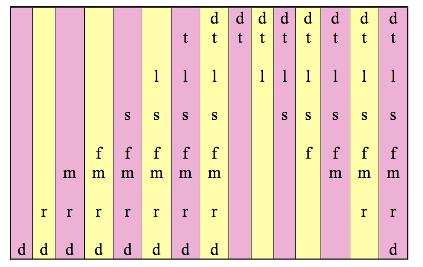
Happy summer to my fellow retired members! Aren’t we a lucky group that gets to experience every day as if it were summer break? I like the saying “every night feels like Friday, and every day feels like Saturday.” I still can’t get over how wonderful a privilege retirement is, even as I end my second year in retirement. I can only hope that those that are reading this feel the same.
It has been a real joy to meet those of you that chose to attend the January and May Zoom meetings. I feel very lucky to be able to hear, and share in your stories; I am thrilled to learn how so many of us continue to stay busy with musical endeavors, district involvement, adjudication, performance, classroom activity, and mentorship. It is my hope to meet more of you in the upcoming year, both on Zoom and in person at CASMEC in February 2024.
One of the items that was discussed in a Zoom call was whether or not attending conferences was beneficial, since what is presented in sessions no longer applies to our lifestyle while out of the classroom. There might be merit to this if you have removed yourself from musical activities, or you are no longer interested in keeping your finger on the pulse of music education.
I have continued attending conferences for multiple reasons. Here is a short list of what keeps me interested at conferences (I would love to hear some of the reasons why other retired members continue to attend conferences):
• It is an opportunity to see friends that are still in the classroom, and that I might only see at conferences (especially at CASMEC).
• I have the opportunity to visit with my mentors who continue to attend conferences.
• I cherish the opportunity to follow the career paths of younger teachers I’ve known since their Day 1.
• I get to hang out with very cool people, as well as meet new cool people!
• Attending student performances, and supporting guest conductors is inspiring.
• Visiting the vendor booths is a form of entertainment ;-)
• I am making an effort to stay up to date on repertoire, and teaching practices.
• I am staying informed in regards to advocacy and diversity, both at local and state levels.
• I am continuing to adjudicate at festivals in Bay Section; I feel that it is important to stay informed with adjudication rubrics and practices that are presented at our Bay Section Winter Conference each year.
• Getting out of town is always nice.
• I am positive that there are several more reasons, but I will stop here!
I am formally extending a blanket invitation to Retired Members to attend the first annual CASMEC Retired Members Luncheon in Sacramento! I will make all of the arrangements, you just need to show up. I will send out the date and time in January 2024 via email. Please acknowledge this invitation by filling out and submitting this Google Form with your YAY or NAY. After lunch we can all pose for a grand photo documenting the occasion. I am very excited to see this come to fruition.
I wish you all a glorious summer filled with love and family, relaxation, travel, reading and good health. See you in Sacramento in February 2024!

We all need support at some point. It really is just that simple. If there is one lesson that we’ve learned through this last year of implementing a state-wide mentorship program, that’s it.
As I reflect on this past year of our mentorship program, the foremost thing that comes to mind is all the wonderful people with whom I’ve interacted. To everyone who has been a part of this journey: mentees, mentors, representatives, section presidents, volunteers, and the executive board, you have my sincere thanks and appreciation. We had twelve members participate in our program this first year as mentees, twenty-one trained, volunteer mentors ready to help, and every single CMEA section was involved.
Some of our participants were willing to share their perspectives on this past year. Peggy Stevens, a mentee in the Central Section, reported, “This program… provided a resource through my mentor for support and growth that has helped me create a more successful classroom environment for each of my classes K-6 by guiding me to resources that I could use to help restructure how I structured my class. My mentor also gave me some great lesson ideas that she used that my students absolutely loved!” Cynthia Jornstat of the Southern Border Section mentored a teacher in the Bay-Area. She says her mentee “was a capable teacher with doubts. It was nice to watch her develop confidence over the months.”
Throughout the year, we facilitated several statewide mentorship interactions. We held three training sessions for our mentors in the fall, facilitated a well-attended and productive mentorship session at CASMEC, and have had numerous conversations, in person and virtually, about the program. In an end-of-year survey, 75% of our mentees reported that they found their participation in the program was highly valuable to their professional growth. 83% of mentors and mentees found that the
balance of time expected for the program was “just right” for their busy schedules. In all, I’m proud of what we have accomplished together, but I know we can do even better next year!
Through a more inclusive lens of mentorship, we are making improvements to the Mentorship Program, based on our experiences and membership feedback. At our CASMEC session in February, and in subsequent conversations among the leadership team, it became clear that promoting a mentorship program focusing on educators in their first five years of teaching was too limited in scope. Yes, the research indicates that the attrition rate for young teachers is near 33% in the first five years and that having a supportive mentor teacher is one of the most effective ways to counteract this trend. But there are myriad other situations where having a support system can vastly improve both practice and outcomes.
As a result, we are shifting from a focus exclusively on mentorship of new teachers to a wide-range of resources, support, and mentorship for all CMA members. This might include teachers who are changing roles or taking on new responsibilities in their career, as well as educators transitioning from elementary to middle/ secondary school, or from K-12 schools to university teaching. Some teachers will relocate to new geographic areas throughout the state. In addition, a handful of educators will move into administrative roles in their districts and communities. Our earlycareer teachers are navigating the California Teacher Induction Program or are working on their Teacher Performance Assessments can use extra support. We all need support at some point and our CMEA Support and Mentorship program will work to be a resource to help fill this need for membership.
We also want to expand and reinforce the networks of support both across the state and within each section. This past year we prioritized matching mentors and mentees based on specialization; that is, we tried to make sure a mentee teaching middle school orchestra was matched with a mentor who had experience and expertise in teaching middle school orchestra, even if it meant they worked on opposite ends of the state. Next year, we will continue to match people based on their specializations, offering even more specializations such as university and administration, but additionally connecting mentees to their local sections to build on local resources, knowledge, and opportunities. All this while maintaining a workable schedule for everyone involved. Everyone needs support at some point. If you are at a point of your career where you feel like you need some extra support, please take advantage of this program in 2023-2024. And if you are at a point of your career where you feel you can be that source of support for another educator, we encourage you to apply as a volunteer mentor for the 2023-2024 academic year. If you have questions about or suggestions for the CMEA Support and Mentorship Program, please email mentorship@calmusiced.com.
Sidebar:
Are you…
• a first-year music teacher facing the prospect of a new job?
• an early-career educator hoping to improve your practice?
• a music education California Teacher Induction Candidate with a coach who isn’t familiar with music education?
• recently finished with the Induction program but wanting more music-specific support?
• recently moved to a new area and need to make new professional connections?
• changing roles as a music educator?
• starting a new program or class?
• changing assignments?
• being asked to try something new?
• starting a new career as an arts administrator or university professor?
• expanding your program to include new ideas or approaches?
• feeling overwhelmed?
• worried about burning out?
• needing to reconnect with a professional community to relight the spark?
• wanting extra professional support for any reason?
Then take advantage of CMEA’s free Support and Mentorship Program for our members. Apply below to get connected! Our profession is better when we’re working together.
bit.ly/CMEAsupport24


Are you an established music educator who is willing to volunteer a few hours a month to support other music educators who want and need your support? Apply today to become a CMEA mentor.
(Note: Applying to be a mentor does not guarantee that you will be paired with a mentee in any given year.)
bit.ly/CMEAmentor24
 by William J. Coppola, Ph.D.
by William J. Coppola, Ph.D.
One of the most common questions music teachers ask when seeking to diversify their curriculum is, “How do we decide which cultures to feature?” Fortunately, the introduction of culturally responsive teaching to the field of music education offers a powerful proposal: we should start by centering the musical cultures with which our students most closely identify (McKoy & Lind, 2022). But there’s another question that arguably gives music teachers even greater pause: “How do we decide how many cultures to feature?”
This question reflects a classic tension between “breadth” and “depth”: if we focus on too many cultures, we might not achieve enough depth with any of them; if we focus on only a small handful, we might lose out on a greater breadth of musical expressions around the globe. We usually see breadth and depth as opposing ends of a balancing scale, with one coming at the expense of the other. And so begins the classic internal battle: If I choose “these” musical cultures over “those” ones, am I implicitly suggesting that the latter ones are less important? On the other hand, if I try to squeeze in as many cultures as I can, might I inadvertently end up tokenizing some or all of them? There’s no way we can become experts in every musical culture we wish to feature, after all, so does aiming for breadth risk inadequate (at best) or offensive (at worst) coverage of these musical practices?
I certainly resonate with those teachers who question whether there’s a proper solution to this ostensible stalemate. Through critical reflection and openness, we can usually find for ourselves the most appropriate balance between breadth and depth that works
best for our students. But giving teachers the agency to establish their own equilibrium doesn’t settle the matter entirely, since no matter where we strike the balance, we still might feel like we’re sacrificing either one or the other. Indeed, this is sometimes used as an excuse for snubbing diversity efforts altogether in music education. For instance, in response to calls for diversity made in the College Music Society’s “Taskforce Manifesto” (Sarath et al., 2017), the College Band Directors National Association (CBDNA, 2016) questioned, “Might continuing to teach from many diverse offerings risk a shallowness of experience?” (p. 5). Asking teachers to cover many cultures with which they’re neither familiar nor trained might risk more harm than good, right?
But what if we didn’t need to think about global music education in such terms? I’d like to suggest that there’s another way we might think about the balance between depth and breadth—one that doesn’t lead us to conclude that we’ll always be falling short in some way. It requires, in my view, a return to one of our most fundamental questions: Why do we do what we do? I don’t pose this question in terms of global music education, or even music education generally, but in its broadest sense—in the art of teaching, writ large. Do we teach certain things because we expect our students to absorb and hold onto them forever? If so, our efforts just might be a fraught endeavor. (Case in point: I took calculus in high school, but could barely tell you a thing about it today!)
The same goes for global music education, in my view. Do I expect that my students will remember everything they might have
learned in my classes? Of course not. (In fact, this is precisely why I usually avoid convergent assessments like multiple-choice exams.) Rather, it’s my hope that students will develop a deeper sense of curiosity about the ways in which music expresses the diversity of human life. Importantly, we need to be careful to help students think of curiosity not in othering or exoticizing terms, but with a cosmopolitan sense of “open-earedness.” I think even a nugget of curiosity, properly cultivated, can grow into a lifelong fascination with the world’s wide-ranging musical expressions. This is what I’m aiming for; not any kind of world music “expertise.”
I’m not saying that “knowledge about” global music isn’t important. Sure, I want students to “know” when Korean jeongak or Balinese gamelan music is traditionally performed, why griots are so important in many West African communities, and why I consider trovadores in Puerto Rican jíbaro music to be such masterful improvisers. But what matters more to me, at least in the long run, is that my students’ musical explorations will instill a deeper sense of curiosity with respect to their place in the world, driving them to learn as much as they can about the various artistic expressions that humanity has thus far offered us. In short, I want students to see their place on this earth as something larger than themselves.
To this end, I think two primary aims of any meaningful global music education should be to develop a sense of (a) curiosity, awe, and intrigue toward music as a pan-human phenomenon, and (b) self-sufficiency as learners are empowered to embark on their own unique journeys of artistic self-discovery. Together, I think these aims drastically improve the chances that meaningful learning will happen long after students have left the classroom. In some ways, this might reflect the old adage, give a person a fish, you feed them for a day; teach a person to fish, you feed them for a lifetime. By reframing things in this way, we might embolden ourselves to look beyond the guilt-ridden feeling that “we’re not featuring x number of musical cultures per year” and to instead focus our attention toward instilling a kind of cosmopolitan self-sufficiency among our students.
How might we go about this? First, I agree with Juliet Hess (2021) that we should look beyond global music education as some sort of cartographic “scratch-off” map. Rather, we might do well to approach music education through the lens of cultural humility, which I previously suggested in last summer’s issue (see Coppola, 2022). In this way, we understand our journeys as interminable, further reinforcing the notion that there is no “optimal” level of “mastery” that can be achieved by striking some ideal curricular balance over an instructional term.
Second, in order for students to develop the personal agency to embark on their own global music journeys, we should familiarize them with the tools and resources that enable them to become self-sufficient explorers in this regard. As much instructional time as I might spend deep within some particular traditions, I also spend plenty of time helping students become comfortable using the most trustworthy resources for exploring culturally diverse musical practices—including Smithsonian Folkways Recordings, the Association for Cultural Equity, the World Music Pedagogy book series, and many more. A perfect example of this happening in real-time can be seen in Juliana Cantarelli Vita’s (2021) dissertation, in which elementary-aged students autonomously explored archival recordings and breathed new life into collected songs as they reflected the musical heritages of children across the globe.
Would either Juliana or I claim, by the end of our time with our students, that they will have achieved some sort of mastery over
x number of musical cultures? No. (Impossible!) But might we both confidently say that our students know exactly where to look, how to conduct their own research, and what kinds of ethical questions they should be asking themselves as they self-directedly discover once-unfamiliar musical practices that continue to pique their curiosity? Absolutely.
In that case, I would suggest that our students are getting exactly what they need.
Cantarelli Vita, J. (2021). ‘Because songs reflect the people’: Archival recordings of children’s music as pathway to respectful resonance (Doctoral dissertation, University of Washington).
College Band Directors National Association. (2016). A position paper by the CBDNA Music Education Committee. https://www. cbdna.org/wp-content/uploads/2019/09/CBDNA-The-Callfor-Perspectives.pdf
Coppola, W. J. (2022). It’s okay to not know: The power of cultural humility in teaching global music. CMEA Magazine, 75(3), 26–27. https://calmusiced.com/communication/magazine/

Hess, J. (2021). Cultural competence or the mapping of racialized space: Cartographies of music education. Bulletin of the Council for Research in Music Education, 227, 7–28. https://doi. org/10.5406/bulcouresmusedu.227.0007
McKoy, C. L., & Lind, V. L. (2022). Culturally responsive teaching in music education: From understanding to application (2nd ed.). Routledge.
Sarath, E., Myers, D., & Campbell, P. S. (2016). Redefining music studies in an age of change: Creativity, diversity, and integration Routledge.






























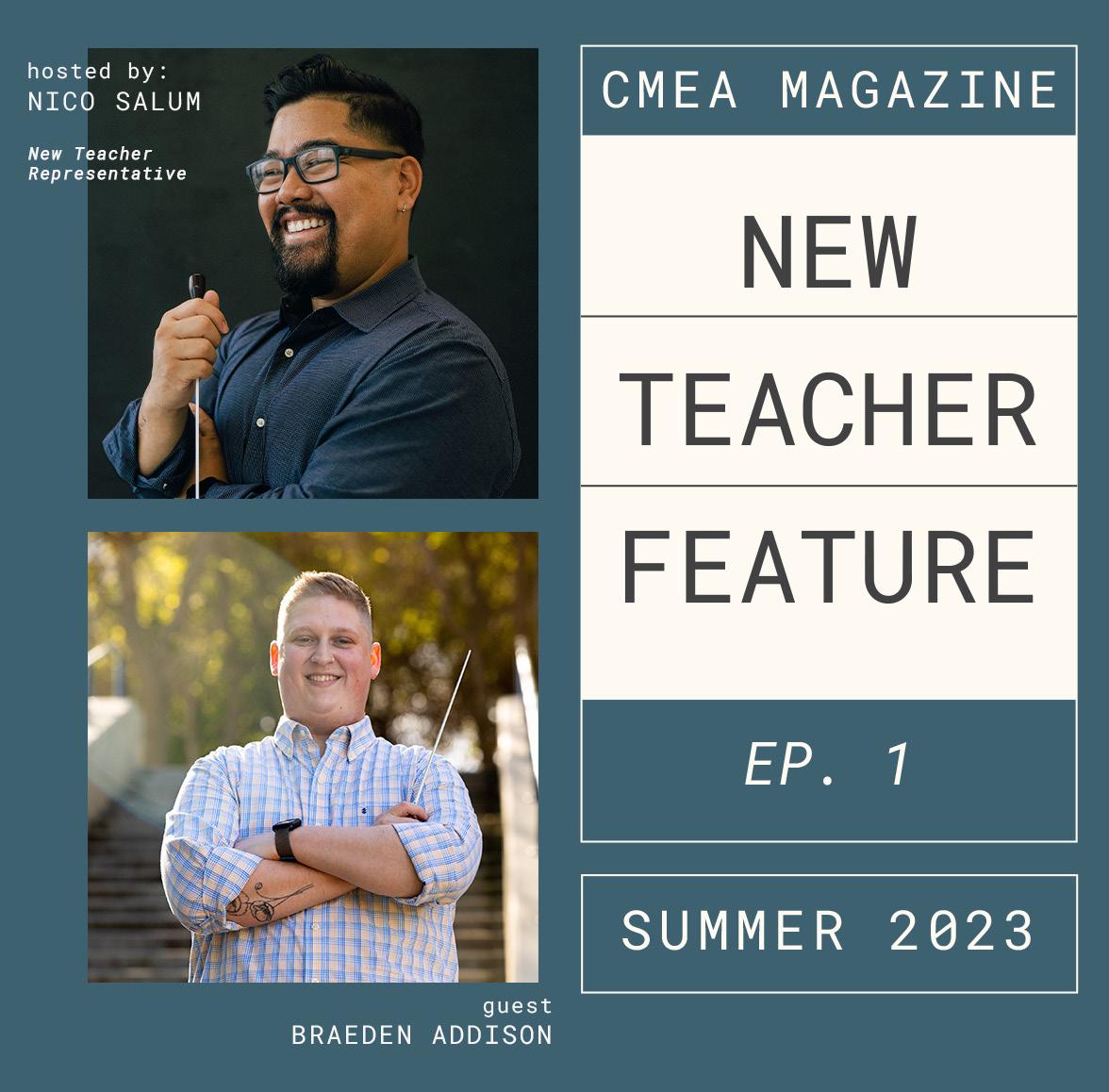































I hope your summer plans have been set and that you are able to take a few days for you to rejuvenate with friends and family. Couple of things I’d like to make you aware of as we transition into summer mode.





To support the growing number of arts leaders in the state, our next Music/Arts Supervisor seminar will be held in two different locations on two separate days. We will have a meeting in the southern part of the state with our partners at the Segerstrom Center for the Arts, followed by another meeting in the Northern California area. I will be sending updates as soon as they’re firmed up in the next couple of weeks.
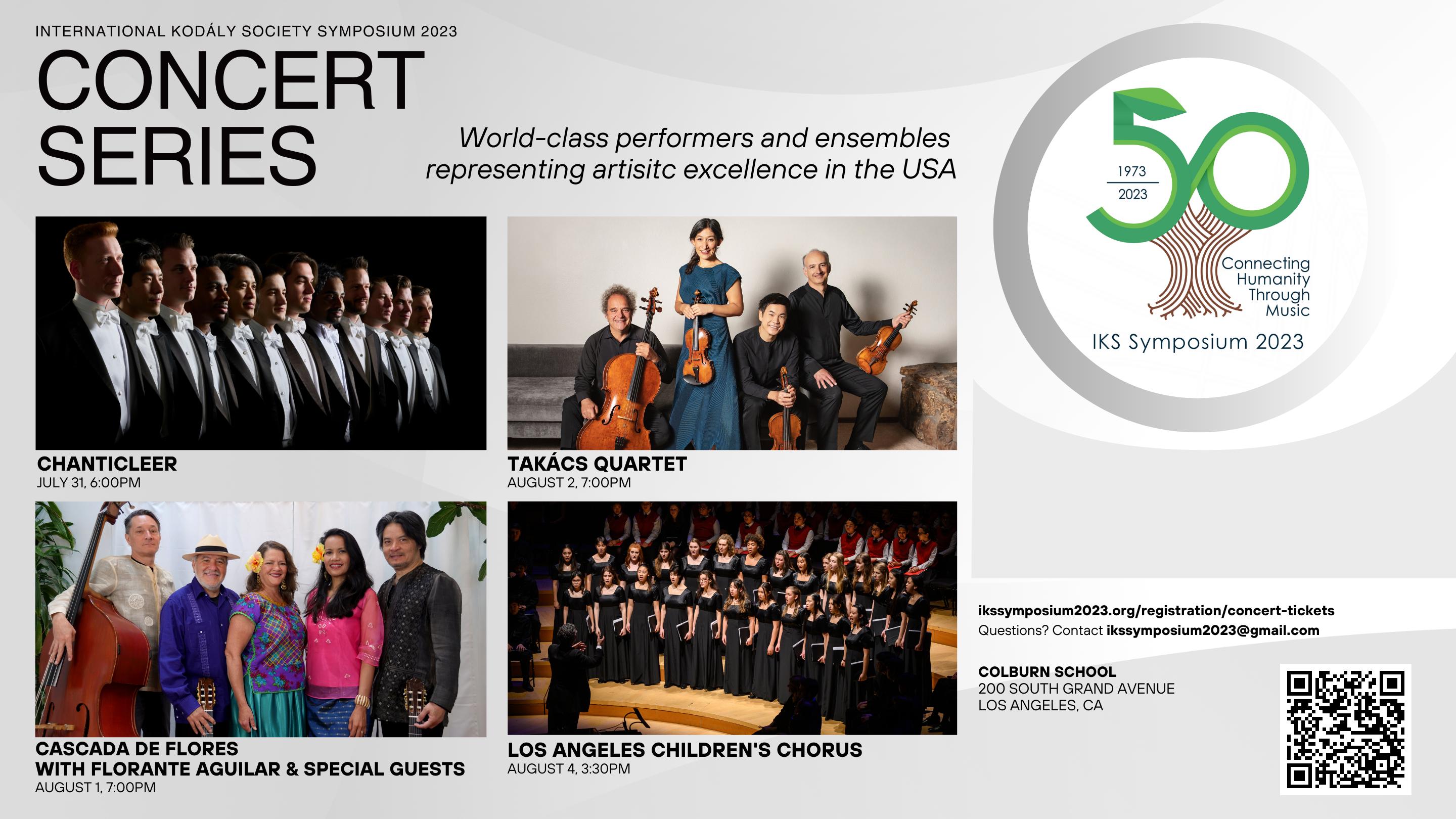










































I also want to mention my transition into retirement starting at the end of this month. I’m excited to serve our community for one more year and looking forward to your work and conversations as we continue to foster what could be a new renaissance in music education in the state of California. My new email is bvanpatt@ icloud.com. Please feel free to reach out with any questions or suggestions.
After a two-year hiatus, the 2023 CMEA State Choral Festival took place at Meng Hall on the campus of California State University, Fullerton in Southern California! This beautiful day in Orange County highlighted the following choirs, with the following clinicians:

• Encore High School for the Arts Women’s Choir - Robert W. Hekel, director (Hesperia, CA)
• La Quinta High School Vocal Ensemble - Darlene Machacon, director (Westminster, CA)
• Robert F. Kennedy High School Song Birds - Marlex Booc, director (Bakersfield, CA)
• University High School Madrigals - Rob Blaney, director (Irvine, CA)
• Troy High School Vocal Ensemble - Mark Henson, director (Fullerton, CA)
• Trabuco Hills High School Chamber Choir - Kenneth Haro, director (Mission Viejo, CA)
• Norco High School Madrigals - Rachelle Randeen, director (Norco, CA)
Clinicians:
• Julie Dana (President-Elect of Western ACDA, past Choral and Vocal Professor at Fresno City College)
• Dr. Arian Khaefi (Director of Choral Studies, San Diego State University)
• Dr. Christopher Peterson (Director of Choral Music Education, California State University, Fullerton, current CCDA President)
Each school walked away with the following:
• A musical day of artistic and diverse repertoire!
• An on-stage clinic with one of our amazing adjudicators
• A CMEA participation plaque with each school’s name and director
• A digital on-stage photograph for each school’s social media distribution
• Printed programs to distribute to school’s Administrators and archives
• An audio recording of their performance and clinic
• Audio comments from each adjudicator
Lots of thanks to Trish Adams, Chad Zullinger, and Anne Fennell for their leadership and guidance for this event! A special thank you to the student volunteers from the Vocal Music Program at Troy High School, and the TRI-M Chapter #7054 at Fullerton Union High School - the day went smoothly with their help as ushers and guides. Thank you also to Dr. Christopher Peterson and the staff at CSUF for hosting a beautiful day of music making. Lastly, I really want to thank the directors and all of the singers - it was so lovely to listen to all of your performances from application to stage. You are really the heroes in all of this!
The State Choral Festival switches to Northern California next year! It will be on April 2, 2024, at Weill Hall in the Green Music Center at Sonoma State University. Applications are live at calmusiced.com, and are due on September 1, 2023. We hope to see you there!


rating or have participated in a Comments-Only CMEAsanctioned festival during Spring Semester of 2023. CMEAsanctioned festivals include festivals hosted by CMEA Sections and also the Southern California Vocal Association (SCVA). Applications include a recording of the ensemble performing approximately 15 minutes of music with at least two works that best demonstrate the group’s abilities. All recordings will be uploaded with the online application which is now available on the CMEA website. The due date of the applications is Friday, September 1, 2023. Directors will be notified of acceptance by September 22, 2023.
In 200 words or less, please write a short paragraph describing your school and choral program. Include anything interesting or unique about your area, program, or your students. This narrative will be submitted to the committee for consideration, so anonymity is essential. The intent of this festival is to showcase outstanding choral ensembles that represent the diversity of our great state.
Each ensemble participating in the California State Choir Festival will receive recorded comments from a panel of three prominent adjudicators and receive a 20-minute in-person clinic with one of the adjudicators immediately following the performance. You must provide three original scores for each piece your ensemble will perform.

The festival participation fee is $400. The application and recordings are due September 1, 2023. The participant fee is due immediately upon notification of acceptance but no later than November 30, 2023. All accepted schools will be invoiced with options for paying by credit card or check.
After December 1, 2023, refunds will only be given if the event is canceled due to State or local travel restrictions.
The Spring 2025 festival will be in Southern California in Meng Hall at CSU Fullerton. We plan to return to Sonoma State in Northern California in Spring 2026 and continue this pattern into the future.
The California State Choral Festival, presented by World Projects, will be held on Friday, April 26, 2024, at the Green Music Center on the campus of Sonoma State University.



Here in California, as Young Composers Symposium grows annually through our California All-State Music Education Conference (CASMEC), the number of participants from the community of students, family, and teachers is growing! This may mean that the message about how critical creativity is to education is not only being heard but also, the idea that all young people can create new music is becoming respected and treasured. In this space, I will highlight five music educators sharing three ideas they use in their classrooms supporting creative experience of K-12 students. These ideas reflect one similar position: all young people can create new music. There can never be too many ideas because, in the midst of them, are those that may work for you! Thank you, Music Educators, for sharing!
1. With my 1st, 2nd, & 3rd graders, we play hand-held rhythm instruments. Sitting on their carpets, I play different songs and just let them do their own thing. Following this, I give very specific instructions. I ask them to listen very closely to the rhythm and tempo of each individual song and make sure they are keeping the beat of that specific song.
2. They may choose to play the basic beat, or they may play the rhythm of the lyrics. I always play through about half of each song then stop the music.
3. They pass their instrument to the person on their left and I play the rest of the song. They get to play several instruments during our short 25-minute class time. They love this creative activity! I learned (and continue to learn) through TONS of listening and copying models. I know there is a place for creativity, and I know that I’ve been creative along the way… it’s a tricky balance.
1. Using Song Brush (similar to Chrome Music Lab), students can use their ChromeBook and create their own song by drawing on the measure/staff with repeat. Students may choose instruments such as acoustic guitar, saxophone, glockenspiel, keyboard, piano, electric guitar, trumpet. They can also try their composition in different tempos such as larghetto, andante, moderato, and allegro. Students can play for the class or can just use their headphones to listen to composition based on their drawing. They can choose to repeat the composition or play as a two-bar phrase.
2. During our drum circle time, a student or students play a rhythm pattern on their drum and remaining students echo back on their own drum. Students can also walk a pattern of rhythms and the children follow playing drums as they are walking. They can play slow or fast tempo. Especially during the walking beat time, we add movements such as jumps, dance, hop, skip, or run and we all find this to be a lot of fun!
3. Students draw themselves playing the drum as well as create quarter, eighth, and half note rhythm patterns in their picture. The teacher walks by and students play the patterns created on their drum. Students can trade papers and play each other’s compositions. Students really love this artistic activity as it involves art and music!
1. I invite students to examine the historical and cultural context of the pieces they play. From an informed position, I ask them what they believe the composer’s emotional intention was. I invite students to relate their life experience
to their perceived emotional intention of the composer.
2. Students are invited to emote, with inflection, because the inflection changes the meaning (just like in speech). This is done within the appropriate style of whatever genre we are playing, otherwise it comes across as ill-informed.
3. During my work with the mariachi program, I very much prioritize learning and teaching this music in a way that is authentic in style, and a way that honors and respects the Mexican tradition. We copy the masters and learn from the best. Some of our ideas for creativity within ensembles: band name, programming sets, logo design, booking gigs, designing t-shirts, jackets, stickers, promotion, incentives and rewards for students. These are non-musical, but very much a part of the groups’ success.
1. Create Your Own Notation - This was very popular with my students in 6th grade band; a great way for them to think about how symbols can convey musical ideas. Their creations were wide and varied and a lot of fun for them to do.
2. Compose the Prompt - A great way to get students composing without notation and thinking about how music can evoke a mood or idea. Originally developed for my 6th grade beginning band but can easily be used with any grade
level or ensemble. A nice change of pace and a lot of fun.
3. Beginning Blues Activity - Another way to get students composing. Developed with 6th grade beginning jazz students and may be adapted for any level or type of ensemble.
1. Make a Holiday album and distribute it on digital platforms like Spotify!
2. Rights are cheap and can be done through easy song licensing.
3. Host a battle-of-the-bands show at the end of the year and open up the room during lunch for outside on-campus musicians to rehearse for it. Many of those musicians will join next year if they have a space to perform their music.
2024 All-State Honor Choirs at CASMEC
February 1-3, 2024
Sacramento, CA
Conductors:
Ms. Mary Biddlecombe, Junior High SATB
Dr. Elise Dekaney, High School SSAA
Dr. Troy Robertson, High School TTBB
Dr. Brandon Williams, Junior High SSAA
Dr. Julie Yu, High School SATB
The California Choral Directors Association (CCDA)
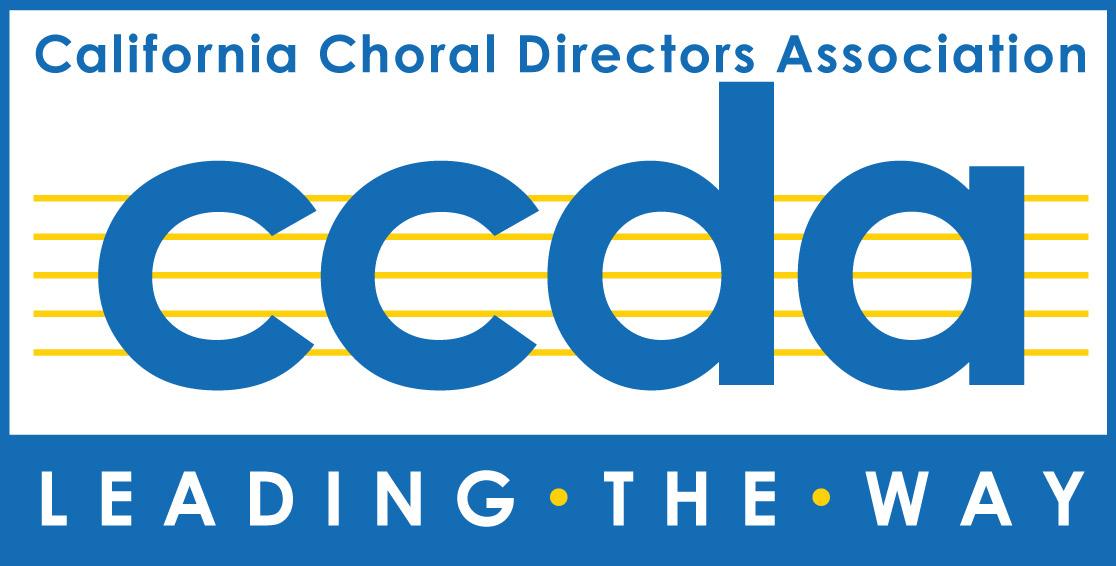
For more information about all our activities check us out at: https://www.calcda.org
CCDA Summer ECCO Conference (Oakhurst, CA)
July 23–26, 2023
Headliner:
Dr. Felicia Barber, Associate Professor, Yale School of Music Conductor, Yale Camerata Institute of Sacred Music
Connect with colleagues from around California in a fun, casual and educational environment.
2024 ACDA Western Region Conference in Pasadena, CA
March 6–9, 2024
Conductors:
Dr. Judy Bowers – Children’s Honor Choir (grades 4-6)
Ms. Emily Ellsworth – Youth SATB Honor Choir (grades 7-9)
Dr. Julie Yu – High School SSAA Honor Choir (grades (9-12)
Dr. Rollo Dilworth – Gospel Honor Choir (High School, College/ University, ACDA members)
Audition information/materials available: August 1, 2023
Audition applications available via Submittable: August 7, 2023 –
September 29, 2023
https://acdawestern.org/2024-wacda-pasadena/
As one school year ends and another approaches on the horizon, CBDA looks to build on its past successes as well as finding new, innovative ways to serve both band directors and students. As our organization navigates a post-COVID world and prepares to move to Sacramento in 2024 with the rest of our CASMEC family, the time has never been better for us as an organization to continue to evolve and grow as an organization. Below are some of the exciting things we have going on within CBDA!
CBDA is in the planning stages of a brand new event called “CBDA All-State Saturday,” which will serve as an audition clinic day for students across the state to come and work on their audition material with top-of-the-line educators and instructors on their specific instruments. Additionally, we plan on offering this event at multiple locations from northern to southern California in order to increase accessibility to our students. As we finalize details, please check in at our website (www.cbda.org) and our social media pages on Instagram and Facebook so you have access to the latest updates!
Connected to CBDA is the California Band Directors Foundation (CBDF). Started with the intention to help support band programs and all-state students, the foundation looks to help provide opportunities to all-state students in need. In order to accomplish this, CBDF runs the Mike Gangemi Memorial Scholarship Fund in honor of the great educator Mike Gangemi, a longtime CBDA board member and incredible educator. Mike was a prolific volunteer for CBDA who truly believed in the mission of our organization and donated anonymously to CBDA for many years in order to help students who had trouble paying their student fees. We would invite everyone to give (and help spread the word about this incredible scholarship fund!) by heading over to our site https://cbda.org/home/cbdf/

CASMEC 2023 included the first-ever performance of the CBDA All-State High School Golden State Band! After a terrific first year performing, CBDA is proud to offer this ensemble again
for students from ensembles whose schools have a total enrollment under 1750 students or have less than 5% of the student population in the instrumental music program. Additionally, the school must either be a Title 1 School, have 5% or less of band members taking private lessons, or only 1 concert band performance ensemble in the school’s program. CBDA is excited about the direction of this ensemble and the role it plays in helping provide an all-state experience to even more students!
2023’s Social Justice Consortium performance of “I Am Enough” by Marie Douglas was met with rave reviews. To follow up on that, CBDA is excited to continue the work we are doing with our Consortium by partnering with two composers from the Indian community: Aakash Mittal and Shruthi Rajasekar. Not only are we ecstatic about playing a small part in helping to create new music by composers of Indian heritage for the concert band ensemble, we are thrilled that we are able to expand our Consortium offerings to include multiple composers who will be writing music for multiple grade levels (grades 2 and 4) in order to offer more options for band directors and their ensembles.
The 2022 CBDA Fall Bulletin brought forth a large variety of articles across the band realm that served as helpful resources for our educators. We plan on continuing this in Fall of 2023 and are already in the process of soliciting articles from people across the music education realm in order to serve our members. If you would like to contribute to said bulletin, please reach out to us about submitting an article by contacting us at www.cbda.org!

As CBDA (and CASEMC as a whole) begins our new chapter in Sacramento, we are excited to continue evolving as an organization that plays a role in the broader goal of advancing music education in California! We look forward to seeing everyone in February of 2024!

The CAJ board is regrouping this June to discuss an overview of the academic year and to plan our 2023-2024 academic year. The general consensus from talking to educators across the state is that it was great to have a fairly normal (post-pandemic) year, but everyone wondered how they used to do everything! I concur. It’s wonderful to be across the finish line of another school year.
We are accepting nominations for the CAJ Hall of Fame 2024. Nominations should be for educators who are retired from teaching and have contributed meaningfully to jazz education in California. We accept instrumental and vocal - all levels, including professional musicians and composers who have impacted jazz education. Please check out our HOF page for past honorees - a “who’s who” in jazz education. We were thrilled to bring in Les Nunes, Emily Gates, and Dr. Charles Hamilton this year at CASMEC. Please send your nominations to: info@cajazz.org
We are amping up our Tune-Up clinics now that most schools are allowing normal activities on campus. Directors can have their bands “come as they are” - they do not/should not try to have groups be performance‐ready. The idea is to work on concepts that are lacking. It’s casual – a workshop environment. They can structure the Tune-Up to fit your needs. We had several schools take advantage of our “One-on-One Tune-Up” where one clinician came to the school to work on a specific issue. Go to our site for more info!
CAJ is excited to announce this new partnership with NafMe for a collegiate chapter. College students enrolled as NafMe Collegiates can sign up for free to become a CAJ collegiate member. Our board and membership want to support the next generation of jazz educators. Please contact our new CAJ Collegiate President, Caitlin Cooper, by going to our website for more information.
We are excited to announce the following positions are open on our board.
• Newsletter Editor: This requires writing skills and a creative approach to reaching our membership through email newsletters.
• Social Media & Marketing Director: This requires tech skills in all social media to promote the activities of CAJ. Reach out to info@caj.org to apply! We are hoping to fill these positions asap.

CAJ will host our Summer Jazz Educators Institute in Southern California next summer. Tina Raymond (Director of Jazz Studies at Cal State Northridge) and Barb Catlin (Director of Jazz at Pomona College & Caltech) will host the two-day event. We hope to help directors who are new to jazz as well as work on concepts to finetune ensembles. The atmosphere will be encouraging, fun, and participatory. Stay tuned for details!
We hope you all have a restorative summer break. We look forward to seeing you in Sacramento for CASMEC 2024!
